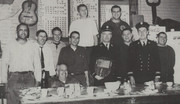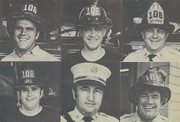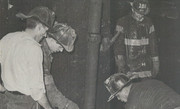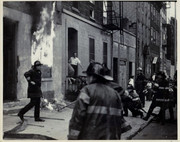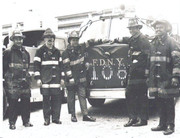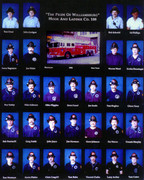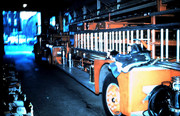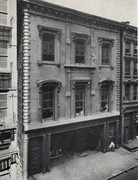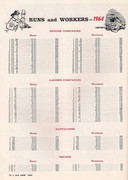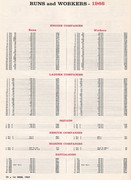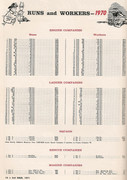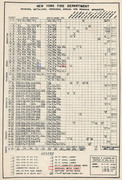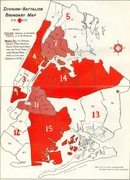You are using an out of date browser. It may not display this or other websites correctly.
You should upgrade or use an alternative browser.
You should upgrade or use an alternative browser.
FDNY and NYC Firehouses and Fire Companies - 2nd Section
- Thread starter mack
- Start date
Engine 216/Ladder 108/Battalion 35 firehouse 187 Union Avenue Williamsburg, Brooklyn Division 11, Battalion 35 "The Pride of Williamsburg"
Engine 16 BFD organized Stagg Street and Union Avenue former volunteer firehouse 1872
Engine 16 BFD new firehouse 11 Scholes Street 1893
Engine 16 BFD became Engine 16 FDNY 1898
Engine 16 became Engine 116 1899
Engine 116 became Engine 216 1913
Engine 216 new firehouse 187 Union Avenue at Ladder 108 1971
Engine 18 BFD organized 112 Seigel Street 1877
Engine 18 BFD moved to 650 Hart Street 1887
Ladder 8 BFD organized 112 Seigel Street 1887
Ladder 8 BFD became Ladder 8 FDNY 1898
Ladder 8 became Ladder 58 1899
Ladder 58 moved to 89-91 Humboldt Street 1906
Ladder 58 moved to 112 Siegel Street 1907
Ladder 58 became Ladder 108 1913
Ladder 108 moved to 187 Union Ave w/Bn35 1971
Bn 35 organized 166 Clymer Street at Engine 111 1906
Bn 35 moved to 137 Powers Avenue at Engine 113 1908
Bn 35 moved to 166 Clymer Street at Engine 211 1915
Bn 35 moved to 112 Siegel Street at Ladder 108 1927
Bn 35 moved to 187 Union Avenue w/Ladder 108 1971
Engine 16 Brooklyn Fire Department:

"Engine Company 16 occupies a house that was built nearly forty years ago. It was first used as the quarters of Bucket Company No. 6, of the Volunteer Department, which some years later was merged into Eagle Engine Company No. 6, the latter company eventually being reorganized as Hose No.6. The house is in a dilapidated condition, the sleeping apartment of the men being the best part of it. The interior arrangement of the house is different from that of any other company in the Department, in that the horses' stalls are in the front of the house instead of the rear. The team, "Bill," a very intelligent black horse, and "Jim" a dark bay, stand on either side of the engine, while "Joe," the tender horse, has a stall right alongside of the two-wheeler. The company was organized in Sept., 1872, and by actual showing are called on to do more active duty than any company in the department. In 1891 the total number of runs was 216, while up to June, 1892, they had responded to alarms from 106 boxes. They are quick workers, their average time in getting out of the house after the signal being five seconds. They are located in a very dangerous district for fires, there being two houses on each lot, most of them frame tenements three and four stories in height, and any number of large manufactories and other buildings in which are stored materials which make hot work when once the flames get a foothold. The district covered by this company on a first-alarm is bounded on the north by North Second Street, and Union Avenue; on the east by the Second bridge of Newtown Creek; on the south by Park and Nostrand Avenue and on the west by South Eleventh and Berry Streets. There are 84 boxes within these boundaries. On a second-alarm they respond to calls from 188 boxes, which takes them anywhere from Classon Avenue to Hunter's Point Bridge." ("Our Firemen - The Official History of the Brooklyn Fire Department")

Ladder 8 Brooklyn Fire Department:
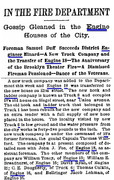

"Hook and Ladder Company No. 8 occupied a two-story brick structure with brown-stone facings, on Siegel Street near Graham Avenue, in the Sixteenth Ward. The district covered by this company is a large and particularly dangerous one, for the reason that nearly every lot has a front and rear house standing upon it, the majority of which are four-story frame dwellings occupied chiefly by German families. On a first-alarm the members respond to calls from 108 boxes, which cover the territory bounded by Leonard and Jackson Streets, by Newtown Creek, Atlantic and Albany Avenues, and by Penn Street and Broadway. In addition to this they cover 88 boxes on a second-alarm and 56 on third-alarm, which latter takes in the Greenpoint District. On "special calls" they go down to the Western District. Among the large buildings in the district are St. Catherine's Hospital, the Montrose Avenue Orphan Asylum, St. Joseph's Home, St. John's College, Home for the Aged, the Beecher Home, St. John's Orphan Asylum, Roman Catholic Orphan Asylum, Holy Trinity Roman Catholic Church, St. Mary's Catholic Church. There are also in this district several public schools, the Lyceum Theatre, Batterman's dry goods and furniture stores, Berlin's dry goods house, Worn & Sons' furniture factory, the Iron Clad manufactory, Bossert's lumber yard, Newman's lumber yard, and Puger's sash and blind factory.
This company was organized Nov. 30, 1887. The house was formerly occupied by Engine No. 18. It has a second-class Hayes truck with extension-ladders, which was built in 1890. "Tom," a gray horse, and "Frank" and "Billy," dark bays, all fine, serviceable young horses, furnish the power for transportation. District Engineer Fanning's horses "John" and "Dick," a roan and chestnut, also have their quarters in the house. The apparatus and horses are always in the pink of condition when not in active service. There are among the members those who have been in perilous positions while in the discharge of their duties as protectors of the property and lives of citizens, and still others who have unflinchingly thrown aside all feeling of personal safety to save the lives of those who were cut off by smoke and flame." (From "Our Firemen: the Official History of the Brooklyn Fire Department")
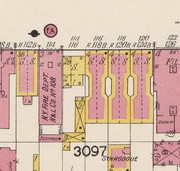
11 Scholes Street Engine 216 former firehouse:




112 Seigel Street Ladder 108/Battalion 35 former firehouse:
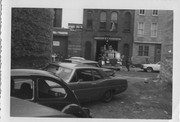
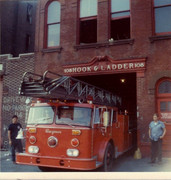
Last tour 112 Siegel Street:
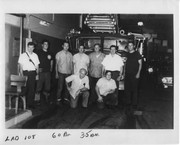
187 Union Avenue firehouse:

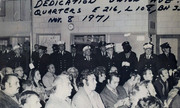
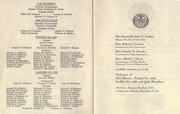
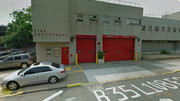






Engine 16 BFD organized Stagg Street and Union Avenue former volunteer firehouse 1872
Engine 16 BFD new firehouse 11 Scholes Street 1893
Engine 16 BFD became Engine 16 FDNY 1898
Engine 16 became Engine 116 1899
Engine 116 became Engine 216 1913
Engine 216 new firehouse 187 Union Avenue at Ladder 108 1971
Engine 18 BFD organized 112 Seigel Street 1877
Engine 18 BFD moved to 650 Hart Street 1887
Ladder 8 BFD organized 112 Seigel Street 1887
Ladder 8 BFD became Ladder 8 FDNY 1898
Ladder 8 became Ladder 58 1899
Ladder 58 moved to 89-91 Humboldt Street 1906
Ladder 58 moved to 112 Siegel Street 1907
Ladder 58 became Ladder 108 1913
Ladder 108 moved to 187 Union Ave w/Bn35 1971
Bn 35 organized 166 Clymer Street at Engine 111 1906
Bn 35 moved to 137 Powers Avenue at Engine 113 1908
Bn 35 moved to 166 Clymer Street at Engine 211 1915
Bn 35 moved to 112 Siegel Street at Ladder 108 1927
Bn 35 moved to 187 Union Avenue w/Ladder 108 1971
Engine 16 Brooklyn Fire Department:

"Engine Company 16 occupies a house that was built nearly forty years ago. It was first used as the quarters of Bucket Company No. 6, of the Volunteer Department, which some years later was merged into Eagle Engine Company No. 6, the latter company eventually being reorganized as Hose No.6. The house is in a dilapidated condition, the sleeping apartment of the men being the best part of it. The interior arrangement of the house is different from that of any other company in the Department, in that the horses' stalls are in the front of the house instead of the rear. The team, "Bill," a very intelligent black horse, and "Jim" a dark bay, stand on either side of the engine, while "Joe," the tender horse, has a stall right alongside of the two-wheeler. The company was organized in Sept., 1872, and by actual showing are called on to do more active duty than any company in the department. In 1891 the total number of runs was 216, while up to June, 1892, they had responded to alarms from 106 boxes. They are quick workers, their average time in getting out of the house after the signal being five seconds. They are located in a very dangerous district for fires, there being two houses on each lot, most of them frame tenements three and four stories in height, and any number of large manufactories and other buildings in which are stored materials which make hot work when once the flames get a foothold. The district covered by this company on a first-alarm is bounded on the north by North Second Street, and Union Avenue; on the east by the Second bridge of Newtown Creek; on the south by Park and Nostrand Avenue and on the west by South Eleventh and Berry Streets. There are 84 boxes within these boundaries. On a second-alarm they respond to calls from 188 boxes, which takes them anywhere from Classon Avenue to Hunter's Point Bridge." ("Our Firemen - The Official History of the Brooklyn Fire Department")

Ladder 8 Brooklyn Fire Department:


"Hook and Ladder Company No. 8 occupied a two-story brick structure with brown-stone facings, on Siegel Street near Graham Avenue, in the Sixteenth Ward. The district covered by this company is a large and particularly dangerous one, for the reason that nearly every lot has a front and rear house standing upon it, the majority of which are four-story frame dwellings occupied chiefly by German families. On a first-alarm the members respond to calls from 108 boxes, which cover the territory bounded by Leonard and Jackson Streets, by Newtown Creek, Atlantic and Albany Avenues, and by Penn Street and Broadway. In addition to this they cover 88 boxes on a second-alarm and 56 on third-alarm, which latter takes in the Greenpoint District. On "special calls" they go down to the Western District. Among the large buildings in the district are St. Catherine's Hospital, the Montrose Avenue Orphan Asylum, St. Joseph's Home, St. John's College, Home for the Aged, the Beecher Home, St. John's Orphan Asylum, Roman Catholic Orphan Asylum, Holy Trinity Roman Catholic Church, St. Mary's Catholic Church. There are also in this district several public schools, the Lyceum Theatre, Batterman's dry goods and furniture stores, Berlin's dry goods house, Worn & Sons' furniture factory, the Iron Clad manufactory, Bossert's lumber yard, Newman's lumber yard, and Puger's sash and blind factory.
This company was organized Nov. 30, 1887. The house was formerly occupied by Engine No. 18. It has a second-class Hayes truck with extension-ladders, which was built in 1890. "Tom," a gray horse, and "Frank" and "Billy," dark bays, all fine, serviceable young horses, furnish the power for transportation. District Engineer Fanning's horses "John" and "Dick," a roan and chestnut, also have their quarters in the house. The apparatus and horses are always in the pink of condition when not in active service. There are among the members those who have been in perilous positions while in the discharge of their duties as protectors of the property and lives of citizens, and still others who have unflinchingly thrown aside all feeling of personal safety to save the lives of those who were cut off by smoke and flame." (From "Our Firemen: the Official History of the Brooklyn Fire Department")

11 Scholes Street Engine 216 former firehouse:




112 Seigel Street Ladder 108/Battalion 35 former firehouse:


Last tour 112 Siegel Street:

187 Union Avenue firehouse:










Engine 216/Ladder 108/Battalion 35 (continued)
Engine 216:
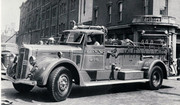

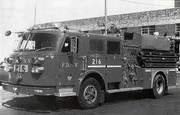

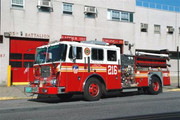
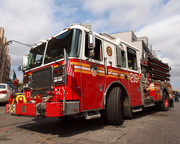


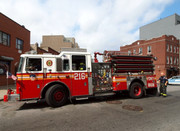
Ladder 108:







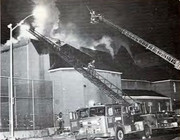

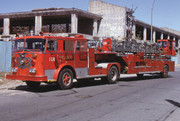

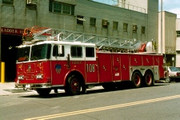


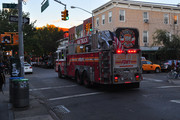
Battalion 35:


Engine 216/Ladder 108/Battalion 35:
https://www.youtube.com/watch?v=Qy0o3eOs3jk
https://www.youtube.com/watch?v=we0xAsWJLtg
https://www.youtube.com/watch?v=u2XbNWYC8yU
https://www.youtube.com/watch?v=U40E8bnYxOo
Engine 216 125 years anniversary:
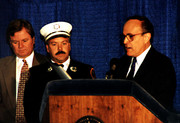

ENGINE 216 AND 125 YEARS OF SERVICE TO WILLIAMSBURG 1872 to 1997
By Mike Boucher S.I. CO
Williamsburg was first settled in 1660 when Dutch framers laid out farms. The City of Brooklyn annexed the Village of Williamsburg in 1855. This new area would become known has the "Eastern District". Five years after the end Civil War, Brooklyn replaced its volunteer fire department with a fully paid department. Thirteen engine companies and six ladder companies would replace the sixty-three volunteer fire companies. The Eastern District would include Engines 11 (now 211), 12 (212), 13 (213 and Ladders 4 (104), 5 (105), and 6 (106).
In 1872 America looked and acted a little different than today. The United States had only 37 states in the Union. Ulysses S. Grant would be elected to his second term as the President of the United States. The Transcontinental Railroad linking the East Coast with the West Coast was three years old and Indian Wars on the Great Plains was just beginning. Famous names familiar to us today were unknown in 1872; Alexander Graham Bell, General George Custer, Teddy Roosevelt, Thomas Edison and the Wright Brothers.
The Brooklyn Fire Department would remain the same that year. Engine 2 (202) and Ladder 1 (101) were combined into a new house, the first for the BFD. They also would add three new engine companies to the growing City. Engine 14 (214) was placed in service on July 4 in a new house.
On Sept 15, 1872, the BFD placed two new fire companies in service in the Greenpoint and Williamsburg sections. The population of these two areas was spreading out further from the center of town as new people moved into the area. With this migration the fire department needed more companies. Engine 15(215) was located in Greenpoint and Engine 16(216) in the southern section of Williamsburg.
The fire protection in Williamsburg was provided by Ladder 5 (105), located at Manhattan Avenue and Ten Eyck Street, Engine 13 (213) at Powers Street and Graham. Ladder 4 (104) was in the center of Williamsburg on S. 3rd Street. Engine 16 was placed in the former volunteer quarters of Eagle Engine Company No. 6, located on Stagg Street near Union. The house was built around 1854 for Bucket Company 6 and Engine 6 moved into the house replacing the Bucket Company a short time later. Around the corner on Scholes Street was Continental Hose 6.
During 1873 Ladder 5 (105) was disbanded, leaving the area with only Ladder 4 (104) to the north. Five years after Engine 16 was organized the Fire Department placed Engine 18 (218) in service at 112 Seigel Street on November 30, 1877. The need for a ladder company in this section of Williamsburg was great and ladder 8 (108) replaced Engine 18 on Seigel Street. Engine 18 was moved to new quarters at 650 Hart Street on December 1, 1887.
The old house of Engine 16 was in such dilapidated condition that plans for a new house were drawn up. The former house of Continental Hose 6 on Scholes was torn down and a new fire station was built. The lot was purchased from Mark Fowler and his wife for $800 on July 18, 1856. In 1893 Engine 16 moved into the new building at 16 Scholes Street. The two-story house cost $10,000 to build on the 25 x 100-foot lot.
The fire station was the standard style Brooklyn house. The first floor had room for the apparatus and stalls for the horses. In the rear was the feed room and horse supplies. The house watch was located up front and on one side wall were the racks for drying out the hoses. Upstairs had three rooms, one room for the officer, a bunkroom with built in lockers for the firemen and a recreation room.
One hundred and twenty-five years ago the fireman life was a hard one. He would work 24 hours a day for seven days and have the eight day off. He could go home for meals twice a day. During his hours firehouse the time was taken up with housewatch duty, hydrant inspection, messenger service, detail to other companies for meals, house cleaning chores, and taking care of the horses. The salary for a first grade fireman was $700 a year or $13.46 a week for the 168 hour work week.
The Cities of New York (including the Bronx), Brooklyn, Long Island City, parts of Western Queens, and Staten Island merged into the five Boroughs of New York City on January 1, 1898. Engine 16 officially became part of the FDNY on January 28th. On October 1, 1899, Engine 16 was renumbered to Engine 116 to avoid confusion with Engine 16 in Manhattan. The ladder companies were given fifty to their number and Ladder 1 became Ladder 51. Engine 116 was renumbered to Engine 216 on January 1, 1913.
After WW II the Fire Department started a rebuilding program. The front wall of Engine 216 cracking and needed replacing. It's not known when it was rebuilt but it gave the house a new look. By the late fifties the station was in need of being replaced. A study on fire station locations also recommended that many stations could be closed and the companies combined. One of these studies recommended that Engine 237 and Ladder 108 be relocated into a new house on Seigel Street near White Street and Bushwick Avenue. A new combined fire and police station was built at 187 Union Avenue off of Broadway. Ladder 108 moved in on August 9, 1971 along with Battalion 35. Engine 216 relocated from Scholes Street on October 13, 1971.
Engine 216 has had four members of the company receiving medals for acts of bravery. Fireman Frederick Schultz received the Brooklyn Citizens Medal for rescuing a woman and her two children from a fire at 190 Meserole Street on January 17, 1905. The Walter Scott Medal was awarded to Fireman John C. Baal on July 1, 1967. He rescued a man from a window via a scaling ladder at 53 Scholes Street.
While off duty Fireman Andrew J. Ashurst received the LaGuardia Medal for his rescue of four people from 393 S. 3rd Street on January 20, 1969.
Lieutenant Williams H. Hayes rescued six occupants of 164 Havemeyer Street on July 11, 1992 and was awarded the Trevor - Warren Medal. He was doing a mutual in Ladder 108 when he made his rescue. Beside these four medals the Company have earned a total of fifteen Unit Citations.
Tragedy struck the company twice with members losing their lives during the performance of their duty. On January 14, 1880, Captain William Baldwin was injured while fighting a fire in Otto Huber Brewery, a three story wood frame building, at 263 Montrose Avenue. The fire was out in less than thirty minutes, and was being placed under control, when without warning, the rear of the building collapsed. Six firemen were injured in the collapse with two being serious. Captain Baldwin was trapped under a beam and received internal injuries along with cuts and bruises. He was removed to St. Catherine's Hospital where he died on January 20 and was buried in Evergreen Cemetery. Captain Baldwin lived at 422 South 4th Street and left a wife and three children. He joined the Department in 1872 and had been the Captain of Engine 16 since 1875. Baldwin was the first member of the Brooklyn Fire Department to lose his life in the line of duty.
The second member to lose his life was Lieutenant Raymond Schiebel of Engine 221. He was working overtime in Engine 216 on the night of March 5, 1995. The company was operating at 128 Hayward Street in a heavy smoke condition when Lt. Schiebel suffered a heart attack. He died on March 7 from the effects of the heart attack. He lived in Bethpage, Long Island with his wife and three children.
Engine 216 has served the Community of Williamsburg faithfully for the past 125 years. No matter what the need was, a fire, or emergency the Company was always ready to protect the citizens of New York City.
THE WHEELS OF ENGINE 216
18?? Amoskeag 2nd size steamer
1869 Amoskeag 2 wheel hose wagon, rebuilt in 1884
1882 Amoskeag 2nd size steamer
1894 Amoskeag 2nd size steamer
1895 Marlborough hose wagon
1901 LaFrance 3rd size steamer
1901 P. J. Barrett hose wagon
1921 American LaFrance 700 gpm pumper, Oct. 20, 1921
1927 International/Pirsch hose wagon, Nov. 7, 1927
1938 Ward LaFrance hose wagon, June 17, 1938
1939 Ward LaFrance 1000 gpm pumper, Jan. 28, 1939
1947 Mack 750 gpm used as hose wagon, Feb.16, 1954
1946 Ward LaFrance 750 gpm used as hose wagon, July 2, 1959
1960 Ward LaFrance 1000 gpm pumper, Sep. 9, 1960
1968 Mack 1000 gpm pumper, Mar. 20, 1969
1972 Mack 1000 gpm pumper, Dec. 4, 1972
1975 Mack 1000 gpm pumper, Oct. 9, 1975
1980 American LaFrance 1000 gpm pumper, Apr. 14, 1981
1986 Mack/Ward 79 1000 gpm pumper, Jan. 14, 1987
ENGINE 216 - UNIT CITATIONS
96 Boerum Street Box 253 Dec. 3, 1959 2300 hours
136 Scholes Street Box 2-2 256 Jan. 15, 1972 0652 hours
387 S. 5th Street Box 235 Mar. 11, 1972 1629 hours
63 Heyward Street Box 2-2 339 Dec. 20. 1972 0001 hours
225-227 Division Street Box 75-313 Feb. 17, 1974 1300 hours
161 Penn Street Box 2-2 2591 June 27, 1974 2234 hours
124 Maujer Street Box 75-258 April 19, 1976 0006 hours
207 Seigel Street Box 75-270 Dec. 31, 1977 1530 hours
433 Lorimer Street Box 2-2-246 Jan. 23, 1978 1015 hours
89 Moore Street Box 75-344 June 18, 1978 0205 hours
392 Lorimer Street Box 2-2 248 Dec. 20, 1978 0441 hours
274 Keap Street Box 2-2 322 Mar. 12, 1979 0908 hours
366 S. 5th Street Box 75-233 June 29, 1983 2003 hours
514 Metropolitan Avenue Box 2-2 138 Oct. 11, 1988 2118 hours
12 Stagg Street Box 75-239 Mar. 15, 1997 0053 hours
THE MEMBERS OF ENGINE 216 1892:
Foreman Thomas Cleary
Assistant Foreman John O'Brien
FF. Philip Bailey
FF. Joseph Briscoe
FF. Thomas Boland
FF. William C. Bonner
FF. Thomas J. Flaherty
FF. John Hineson
FF. William H. McCort
FF. Andrew Taylor
FF. Abram L. Turner
Engine 216:









Ladder 108:















Battalion 35:


Engine 216/Ladder 108/Battalion 35:
https://www.youtube.com/watch?v=Qy0o3eOs3jk
https://www.youtube.com/watch?v=we0xAsWJLtg
https://www.youtube.com/watch?v=u2XbNWYC8yU
https://www.youtube.com/watch?v=U40E8bnYxOo
Engine 216 125 years anniversary:


ENGINE 216 AND 125 YEARS OF SERVICE TO WILLIAMSBURG 1872 to 1997
By Mike Boucher S.I. CO
Williamsburg was first settled in 1660 when Dutch framers laid out farms. The City of Brooklyn annexed the Village of Williamsburg in 1855. This new area would become known has the "Eastern District". Five years after the end Civil War, Brooklyn replaced its volunteer fire department with a fully paid department. Thirteen engine companies and six ladder companies would replace the sixty-three volunteer fire companies. The Eastern District would include Engines 11 (now 211), 12 (212), 13 (213 and Ladders 4 (104), 5 (105), and 6 (106).
In 1872 America looked and acted a little different than today. The United States had only 37 states in the Union. Ulysses S. Grant would be elected to his second term as the President of the United States. The Transcontinental Railroad linking the East Coast with the West Coast was three years old and Indian Wars on the Great Plains was just beginning. Famous names familiar to us today were unknown in 1872; Alexander Graham Bell, General George Custer, Teddy Roosevelt, Thomas Edison and the Wright Brothers.
The Brooklyn Fire Department would remain the same that year. Engine 2 (202) and Ladder 1 (101) were combined into a new house, the first for the BFD. They also would add three new engine companies to the growing City. Engine 14 (214) was placed in service on July 4 in a new house.
On Sept 15, 1872, the BFD placed two new fire companies in service in the Greenpoint and Williamsburg sections. The population of these two areas was spreading out further from the center of town as new people moved into the area. With this migration the fire department needed more companies. Engine 15(215) was located in Greenpoint and Engine 16(216) in the southern section of Williamsburg.
The fire protection in Williamsburg was provided by Ladder 5 (105), located at Manhattan Avenue and Ten Eyck Street, Engine 13 (213) at Powers Street and Graham. Ladder 4 (104) was in the center of Williamsburg on S. 3rd Street. Engine 16 was placed in the former volunteer quarters of Eagle Engine Company No. 6, located on Stagg Street near Union. The house was built around 1854 for Bucket Company 6 and Engine 6 moved into the house replacing the Bucket Company a short time later. Around the corner on Scholes Street was Continental Hose 6.
During 1873 Ladder 5 (105) was disbanded, leaving the area with only Ladder 4 (104) to the north. Five years after Engine 16 was organized the Fire Department placed Engine 18 (218) in service at 112 Seigel Street on November 30, 1877. The need for a ladder company in this section of Williamsburg was great and ladder 8 (108) replaced Engine 18 on Seigel Street. Engine 18 was moved to new quarters at 650 Hart Street on December 1, 1887.
The old house of Engine 16 was in such dilapidated condition that plans for a new house were drawn up. The former house of Continental Hose 6 on Scholes was torn down and a new fire station was built. The lot was purchased from Mark Fowler and his wife for $800 on July 18, 1856. In 1893 Engine 16 moved into the new building at 16 Scholes Street. The two-story house cost $10,000 to build on the 25 x 100-foot lot.
The fire station was the standard style Brooklyn house. The first floor had room for the apparatus and stalls for the horses. In the rear was the feed room and horse supplies. The house watch was located up front and on one side wall were the racks for drying out the hoses. Upstairs had three rooms, one room for the officer, a bunkroom with built in lockers for the firemen and a recreation room.
One hundred and twenty-five years ago the fireman life was a hard one. He would work 24 hours a day for seven days and have the eight day off. He could go home for meals twice a day. During his hours firehouse the time was taken up with housewatch duty, hydrant inspection, messenger service, detail to other companies for meals, house cleaning chores, and taking care of the horses. The salary for a first grade fireman was $700 a year or $13.46 a week for the 168 hour work week.
The Cities of New York (including the Bronx), Brooklyn, Long Island City, parts of Western Queens, and Staten Island merged into the five Boroughs of New York City on January 1, 1898. Engine 16 officially became part of the FDNY on January 28th. On October 1, 1899, Engine 16 was renumbered to Engine 116 to avoid confusion with Engine 16 in Manhattan. The ladder companies were given fifty to their number and Ladder 1 became Ladder 51. Engine 116 was renumbered to Engine 216 on January 1, 1913.
After WW II the Fire Department started a rebuilding program. The front wall of Engine 216 cracking and needed replacing. It's not known when it was rebuilt but it gave the house a new look. By the late fifties the station was in need of being replaced. A study on fire station locations also recommended that many stations could be closed and the companies combined. One of these studies recommended that Engine 237 and Ladder 108 be relocated into a new house on Seigel Street near White Street and Bushwick Avenue. A new combined fire and police station was built at 187 Union Avenue off of Broadway. Ladder 108 moved in on August 9, 1971 along with Battalion 35. Engine 216 relocated from Scholes Street on October 13, 1971.
Engine 216 has had four members of the company receiving medals for acts of bravery. Fireman Frederick Schultz received the Brooklyn Citizens Medal for rescuing a woman and her two children from a fire at 190 Meserole Street on January 17, 1905. The Walter Scott Medal was awarded to Fireman John C. Baal on July 1, 1967. He rescued a man from a window via a scaling ladder at 53 Scholes Street.
While off duty Fireman Andrew J. Ashurst received the LaGuardia Medal for his rescue of four people from 393 S. 3rd Street on January 20, 1969.
Lieutenant Williams H. Hayes rescued six occupants of 164 Havemeyer Street on July 11, 1992 and was awarded the Trevor - Warren Medal. He was doing a mutual in Ladder 108 when he made his rescue. Beside these four medals the Company have earned a total of fifteen Unit Citations.
Tragedy struck the company twice with members losing their lives during the performance of their duty. On January 14, 1880, Captain William Baldwin was injured while fighting a fire in Otto Huber Brewery, a three story wood frame building, at 263 Montrose Avenue. The fire was out in less than thirty minutes, and was being placed under control, when without warning, the rear of the building collapsed. Six firemen were injured in the collapse with two being serious. Captain Baldwin was trapped under a beam and received internal injuries along with cuts and bruises. He was removed to St. Catherine's Hospital where he died on January 20 and was buried in Evergreen Cemetery. Captain Baldwin lived at 422 South 4th Street and left a wife and three children. He joined the Department in 1872 and had been the Captain of Engine 16 since 1875. Baldwin was the first member of the Brooklyn Fire Department to lose his life in the line of duty.
The second member to lose his life was Lieutenant Raymond Schiebel of Engine 221. He was working overtime in Engine 216 on the night of March 5, 1995. The company was operating at 128 Hayward Street in a heavy smoke condition when Lt. Schiebel suffered a heart attack. He died on March 7 from the effects of the heart attack. He lived in Bethpage, Long Island with his wife and three children.
Engine 216 has served the Community of Williamsburg faithfully for the past 125 years. No matter what the need was, a fire, or emergency the Company was always ready to protect the citizens of New York City.
THE WHEELS OF ENGINE 216
18?? Amoskeag 2nd size steamer
1869 Amoskeag 2 wheel hose wagon, rebuilt in 1884
1882 Amoskeag 2nd size steamer
1894 Amoskeag 2nd size steamer
1895 Marlborough hose wagon
1901 LaFrance 3rd size steamer
1901 P. J. Barrett hose wagon
1921 American LaFrance 700 gpm pumper, Oct. 20, 1921
1927 International/Pirsch hose wagon, Nov. 7, 1927
1938 Ward LaFrance hose wagon, June 17, 1938
1939 Ward LaFrance 1000 gpm pumper, Jan. 28, 1939
1947 Mack 750 gpm used as hose wagon, Feb.16, 1954
1946 Ward LaFrance 750 gpm used as hose wagon, July 2, 1959
1960 Ward LaFrance 1000 gpm pumper, Sep. 9, 1960
1968 Mack 1000 gpm pumper, Mar. 20, 1969
1972 Mack 1000 gpm pumper, Dec. 4, 1972
1975 Mack 1000 gpm pumper, Oct. 9, 1975
1980 American LaFrance 1000 gpm pumper, Apr. 14, 1981
1986 Mack/Ward 79 1000 gpm pumper, Jan. 14, 1987
ENGINE 216 - UNIT CITATIONS
96 Boerum Street Box 253 Dec. 3, 1959 2300 hours
136 Scholes Street Box 2-2 256 Jan. 15, 1972 0652 hours
387 S. 5th Street Box 235 Mar. 11, 1972 1629 hours
63 Heyward Street Box 2-2 339 Dec. 20. 1972 0001 hours
225-227 Division Street Box 75-313 Feb. 17, 1974 1300 hours
161 Penn Street Box 2-2 2591 June 27, 1974 2234 hours
124 Maujer Street Box 75-258 April 19, 1976 0006 hours
207 Seigel Street Box 75-270 Dec. 31, 1977 1530 hours
433 Lorimer Street Box 2-2-246 Jan. 23, 1978 1015 hours
89 Moore Street Box 75-344 June 18, 1978 0205 hours
392 Lorimer Street Box 2-2 248 Dec. 20, 1978 0441 hours
274 Keap Street Box 2-2 322 Mar. 12, 1979 0908 hours
366 S. 5th Street Box 75-233 June 29, 1983 2003 hours
514 Metropolitan Avenue Box 2-2 138 Oct. 11, 1988 2118 hours
12 Stagg Street Box 75-239 Mar. 15, 1997 0053 hours
THE MEMBERS OF ENGINE 216 1892:
Foreman Thomas Cleary
Assistant Foreman John O'Brien
FF. Philip Bailey
FF. Joseph Briscoe
FF. Thomas Boland
FF. William C. Bonner
FF. Thomas J. Flaherty
FF. John Hineson
FF. William H. McCort
FF. Andrew Taylor
FF. Abram L. Turner
Engine 216/Ladder 108/Battalion 35 (continued)
Ladder 108 - 1962:

Engine 216/Ladder 108/Battalion 35 medals:
FREDERICK SCHULTZ FF. ENG. 216 JAN. 22, 1905 1906 BROOKLYN CITIZENS
Fireman Frederick Schultz received the Brooklyn Citizens Medal for rescuing a woman and her two children from a fire at 190 Meserole Street on January 17, 1905.

JOHN C. BAAL FF. ENG. 216 JUL. 1, 1967 1968 SCOTT
The Walter Scott Medal was awarded to Fireman John C. Baal on July 1, 1967. He rescued a man from a window via a scaling ladder at 53 Scholes Street.
ANDREW J. ASHURST FF. ENG. 216 OFF DUTY JAN. 20, 1969 1970 LA GUARDIA
While off duty Fireman Andrew J. Ashurst received the LaGuardia Medal for his rescue of four people from 393 S. 3rd Street on January 20, 1969.

WILLIAM H. HAYES LT. ENG. 216 L-108 JUL. 11, 1992 1993 TREVOR-WARREN
Lieutenant William H. Hayes rescued six occupants of 164 Havemeyer Street on July 11, 1992 and was awarded the Trevor-Warren Medal. He was doing a mutual in Ladder 108 when he made his rescue. Beside these four medals the Company have earned a total of fifteen Unit Citations.
GEORGE A. KELLOCK FF. LAD. 108 FEB. 13, 1902 1903 BROOKLYN CITIZENS

Medal Day 1903:
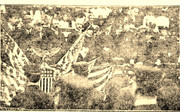
FERDINAND A. BEYER FF. LAD. 108 NOV. 4, 1914 1915 BROOKLYN CITIZENS


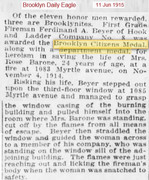
FERDINAND A. BEYER FF LAD. 108 FEB. 24, 1916 1917 BROOKLYN CITIZENS

Captain Beyer was awarded the Brooklyn Citizens Medal for the third time in 1926
LELAND J. WALLACE FF. LAD. 108 FEB. 24, 1916 1917 HURLEY

JOSEPH MAHER FF LAD. 108 FEB. 24, 1916 1917 HUGH BONNER

EDWARD P. MC CONVILLE FF. LAD. 108 AUG. 9, 1924 1925 TREVOR-WARREN

LEO C. FURCHT FF. LAD. 108 AUG. 9, 1924 1925 HUGH BONNER
JOHN E. MESS FF LAD. 108 APR. 24, 1928 1929 BROOKMAN
FREDERICK J. WIDMAYER FF LAD. 108 APR. 24, 1928 1929 BROOKLYN CITIZENS
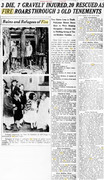
MICHAEL J. MAXWELL FF. LAD. 108 APR. 7, 1931 1932 BROOKLYN CITIZENS

JOHN L. MC GREEVY LT. LAD. 108 OCT. 17, 1942 1943 MC ELLIGOTT


ANTHONY E. CAFARELLA FF. LAD. 108 FEB. 16, 1945 1946 BROOKLYN CITIZENS

BEN L. ALEXANDRO FF. LAD. 108 FEB. 26, 1948 1949 HUGH BONNER

PAUL A. LUKAS CAPT. LAD. 108 NOV. 26, 1949 1950 COMMERCE
WILLIAM A. LAGHEZZA FF. LAD. 108 FEB. 2, 1963 1964 STIEFEL

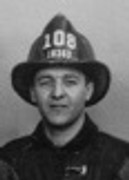
RALPH BERNARD FF. LAD. 108 AUG. 31, 1964 1965 PULASKI

ROBERT J. O'CONNELL FF. LAD. 108 JAN. 20, 1964 1965 KENNY
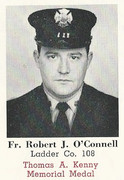

DANIEL J. MARSHALL FF. LAD. 108 APR. 1, 1965 1966 PRENTICE

RICHARD R. PAGANI FF. LAD. 108 OCT. 5, 1966 1967 BROOKLYN CITIZENS

THOMAS A. WILLIAMS FF. LAD. 108 APR. 12, 1967 1968 HOLY NAME

VINCENT J. FOWLER LT. LAD. 108 JAN. 6, 1968 1969 DELEHANTY

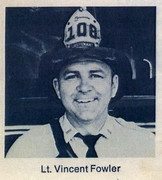
WWII USMC - Retired BC ? father of Captain Vincent Fowler 1999 LODD
ROBERT J. O'CONNELL FF. LAD. 108 JAN. 6, 1968 1969 BROOKMAN

KENNETH E. GREEN FF. LAD. 108 JUL. 30, 1972 1973 COLUMBIA
GILBERT J. MURTHA FF. LAD. 108 JAN. 15, 1973 1974 JAMES GORDON BENNETT

One afternoon in January, 1973, a Brooklyn mother and her two shall children were trapped in ?an oven‐like atmosphere? as fire raged through the apartment below them, their only escape ?a leap to almost certain death at the base of an interior courtyard.?
Firemen First Grade Gilbert J. Murtha saved them and yesterday, while his own wife and four children watched proudlyy, Mayor Beame placed a red rib bon around his neck, bearing the Fire Department's oldest and highest medal.
The honor, the James Gordon Bennett Medal, first awarded in 1869, was one of a series given yesterday to firemen who had risked their lives to save others. The presentations were made at a ceremony in the Pace University gymnasium.
A big banner hung behind the row of blue‐uniformed firemen sitting in the bleachers: ?Ladder Co. 108; ?the pride of Williamsburg? salutes Gil Murtha, the pride of Ladder Co. 108.?
His wife, Arlene, and their four children?Helene, 10 years old; Dianne, 8, John, 4, and Neil, 1?were ushered forward a moment before Mr. Murtha marched forward, leaned to let the Mayor drape his medal around his neck, saluted Mr. Beame and Fire Commissioner John T. Megan, then, grinning, posed for a family photograph.
BERNARD H. MULLEN FF. LAD. 108 FEB. 17, 1974 1975 KENNY

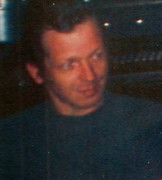
HENRY ZUERCHER CAPT. LAD. 108 FEB. 17, 1974 1975 SCOTT

CHARLES R. BOYCE FF. LAD. 108 JUN. 27, 1974 1975 BROOKLYN CITIZENS
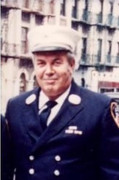
USAF Korean War
NORBERT R. MEEHAN LT. LAD. 108 JAN. 12, 1977 1978 BRUMMER
JOHN J. DOHERTY LT. LAD. 108 JAN. 23, 1978 1979 HUGH BONNER
HARRY S. FORD FF. LAD. 108 NOV. 12, 1978 1979 CRIMMINS
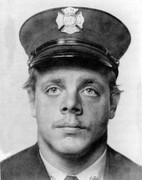
LODD - Father's Day 2001:
Father's Day in 2001, the FDNY lost 3 members at a fire led to explosion in a Hardware store in Astoria, Queens. Numerous members were injured. Firefighter Brian Fahey R-4, Firefighter Harry Ford R-4 & Firefighter John Downing TL-163 were buried alive as numerous members worked above to clear rubble & extinguish the flames to reach their brothers.
On June 17, Father's Day, the Long Island General Supply Company, a hardware store in Astoria, caught fire when a teenager rummaging for a can of spray paint outside the store knocked over a jug of gasoline, which leaked into the basement and was ignited by the pilot light from a water heater.
The fire, which has since been ruled an accident, touched off an explosion that killed Firefighters Harry Ford, 50, Brian Fahey, 46, and John J. Downing, 40, trapping one of them in a smoke-filled corner and crushing the other two under a wall that collapsed.
Capt. Jack Corcoran, a battalion chief who had been the commander of Mr. Ford's rescue company, shared some affectionate stories about Mr. Ford with the congregation. He told of Mr. Ford encountering a muck-a-muck at a fire ("and we know how much Harry loved muck-a-mucks"), who informed Mr. Ford, "I'm in charge here." Whereupon Mr. Ford replied, "Yeah, you're in charge of what you do and we're in charge of everything you don't do."
Mayor Giuliani told of how Mr. Ford had once rescued a baby in a crib from a fire, and another time, while off duty and without protective gear, saved 10 people from a burning building. On yet another occasion, he was home asleep in his apartment when he smelled smoke. Once he had hurried outside the building, someone said an elderly man was trapped inside. In his bare feet, Mr. Ford dashed in and carried the man out.
The Rev. John Delendick, a Fire Department chaplain, who presided over the service, said that around the firehouse, Mr. Ford had a signature phrase. "When he left, he'd say, 'Ta-ta, fellas,'" he said. "And that's what he's saying now."
Once the ceremony ended, the coffin was placed back onto the fire truck. A bugler played taps. A formation of six police helicopters droned overhead.
Ford is survived by his wife, two sons and a stepdaughter.
THOMAS J. GREANEY FF. LAD. 108 JAN. 23, 1978 1979 DELEHANTY

LIEUTENANT THOMAS J. GREANEY - died January 5, 2014 from World Trade Center-related ilness
RICHARD C. DENNINGER FF. LAD. 108 FEB. 24, 1980 1981 THOMPSON


THOMAS A. ROACH FF. LAD. 108 JUN. 20, 1983 1984 LA GUARDIA
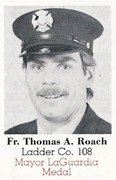
MICHAEL J. HIGGINS FF. LAD. 108 JAN. 16, 1986 1987 ZAHN

GREGORY J. SMITH, JR. FF. LAD. 108 NOV. 20, 1994 1995 NYS HONORARY FIRE CHIEFS
GREGORY J. SMITH, JR. FF. LAD. 108 NOV. 20, 1994 1995 JAMES GORDON BENNETT

?Fire Department Ladder Buckles, and a Father Dies? By LYNETTE HOLLOWAY NOV. 21, 1994
It seemed that the entire family was going to make it to safety yesterday afternoon as yellow and orange flames licked out of a rambling apartment building in a mostly industrial section of Brooklyn.
Standing on a 91-foot aluminum alloy ladder that extended from a fire truck, Firefighter Greg Smith was carrying two children who had been handed through a smoky sixth-floor window on the side of the building by their parents. The parents came next, and the firefighter stepped down a rung to make room.
But something went wrong and the ladder began to buckle about six or seven rungs from the bottom and twist to the right. The parents jumped, fire officials said, landing on a parking lot. The father died, and the mother was critically injured.
Firefighter Smith clung to the two children, cushioning their fall, as the ladder crashed to the ground, said Robert C. Broderick, a New York City Fire Department spokesman.
The father was identified as Ireno Espanosa. The mother, Aqueda Santana, 40, and her children, 4-year-old Edwin Espanosa and 6-year-old Lissetto Espanosa, were listed in critical condition at Bellevue Hospital Center.
Firefighter Smith, 35, from Ladder Company 108 in Williamsburg, was in serious but stable condition last night at Bellevue. Four other people, including one more firefighter, were treated for smoke inhalation, Mr. Broderick said.
More than 50 neighbors and on-lookers screamed when the parents plunged as the blaze raced through the front of the building at 252 South Fourth Street in Williamsburg. Some witnesses said the boy slipped from the firefighter's arms and fell off the ladder, conflicting with fire department reports. They also said it appeared that the two adults fell, rather than jumped. Mr. Broderick said details were still being sorted out, but it appeared all department procedures had been followed.
The two-alarm fire started about 1 P.M. on the fifth-floor of the building, which has 20 apartments, Mr. Broderick said. A call reporting the fire came at 1:02 P.M., he said. Everyone else in the building escaped, he said.
When the fire trucks arrived, witnesses said, the father held the boy, dressed in blue pajamas, out the window and screamed "Cojalo, cojalo" -- catch him, catch him.
"All five of them were on top of the ladder," said Edgar Cruz, 18, a neighbor. "It went crashing to the ground. The ladder toppled to the right. As the ladder was coming down, the baby boy dropped to the side. Everybody just screamed."
The second alarm sounded at 1:10 P.M., almost two minutes after the ladder collapsed, Mr. Broderick said. The fire was under control at 1:34 P.M., he said. Fire officials said the cause of the blaze was not known.
In a press conference in the main lobby of Bellevue, Fire Commissioner Howard Safir said it was unclear exactly why the ladder collapsed.
"We're not ruling out anything until we have a full investigation by our safety battalion," Mr. Safir said, shortly after Mayor Rudolph W. Giuliani visited the injured firefighters and the families of the victims at the hospital."To the best of my knowledge, department rules were followed," he said.
He said the ladder truck was about 3 years old, purchased by the department in 1991 for $500,000. Like all other fire department vehicles, it undergoes routine maintenance checks. Mr. Safir said he did not know when the ladder involved in the accident was last checked, but he said that it was in compliance with department standards.
Mr. Safir said that at the time of the accident, the ladder was extended to its full length, 91 feet, and that only the top rung rested on the building. He said he did not know why the truck was not pulled closer to the building, into an empty parking lot, where the ladder later crashed.
Mr. Broderick said the type of ladder that failed yesterday had been used by the department for more than two decades. It is called a Seagrave Rear-mount Aerial ladder that attaches to the rear of the truck rather than the midsection.
Mr. Safir said, "We're not about to limit the use of this apparatus until we have an indication that this is anything but an aberration."
Hours after the fire, firefighters worked to clean up the debris. The ladder was bent arching crookedly over the sidewalk, resting in the parking lot of Funeral Home Ortiz. The ladder had a sign that said "Pride of Williamsburg."
Fire engine ladders are raised hydraulically and extended by cable and then pulled back slightly so that the locks grip. Firefighters at the scene said they did not know if the ladder had been locked into position.
The fire apparently moved quickly through the well-kept building that sits next to the Brooklyn-Queens-Expressway on South Fourth Street near Borinquen Place and Havemeyer Street. The building's ground floor is mostly stores including a bodega and a Pentecostal church.
Edwin Hernandez, 34, who lives across the street from the building, said he was on his way home from church with his wife when he saw flames coming out of the windows on the top two floors of the building. Mr. Hernandez like many other neighbors knew little about the family.
"I was going upstairs to put my Bible away, but I saw flames and so I gave the Bible to my wife and I went into the building to save people. I knocked on doors. I found a woman and two little girls and I brought them downstairs."
Chief James P. Duggan of the 35th Battalion said: "In my 31 years in the department, I have never seen a ladder collapse like this.I have read articles about it. I have heard of it. Seagrave must have reasons why this happens."
https://www.usfa.fema.gov/downloads/pdf/publications/tr-081.pdf
U.S. Fire Administration/Technical Report Series USFA-TR-081/April 1996
Time Sequence--Brooklyn Box 224 11-20-94
1302 Telephone alarm for 252 S 4th Street, reported fire on the 4th floor.
Dispatched: E221 E216 L104 L108 BN35 E229 1303
Additional Dispatch: RS2, SQ1 1304
Additional reports indicate working fire on 4th or 5th floor of a 6-story occupied multiple dwelling
1305 Engine 221 On Scene reports 10-75 (working fire)
1305 L108 10-84 (on scene)
1306 Mayday--seriously injured firefighters from ladder collapse
NEW YORK CITY INCIDENT A 100 foot aerial ladder collapsed as firefighters were attempting to rescue a family from their sixth floor apartment in the Williamsburg section of Brooklyn, early on a Sunday afternoon, November 20, 1994. Smoke and flames were issuing from a fifth floor apartment on the front side of the six story building when the first alarm companies arrived. Smoke and heat conditions were building-up rapidly on the sixth floor, trapping the family of two adults and two children in their apartment. The first arriving ladder company, Ladder 104, stopped in front of the building and raised their aerial ladder to the fifth floor, adjacent to the fire apartment (see Figure 1). In this situation the second due ladder company, Ladder 108, is expected to provide a ladder to the roof. Because Ladder 104 is a tractor trailer apparatus and several other vehicles were parked on the street in front of the fire building, Ladder 108 had limited access to position their apparatus within reach of the building. Ladder 108 stopped at the intersection so that the officer could evaluate the situation. The street changes direction between the intersection and the fire building, resulting in a wide triangular-shaped sidewalk area. Ladder 108 was positioned on this sidewalk area to obtain the best position to ladder the roof for vertical ventilation. After positioning the truck, the chauffeur went to the rear and began to lower the outriggers for ladder operations.
A firefighter, who was assigned to perform outside ventilation, dismounted from the right side of the vehicle and almost immediately heard someone calling for help. He spotted the father leaning out through a sixth floor window at the side of the building. There was smoke coming from the window and from adjacent windows on the fifth and sixth floors, indicating that the man was in imminent danger. He appeared to be in great distress and in need of immediate rescue. The window is on the side of the building, approximately 30 feet back from the sidewalk, overlooking a fenced-in parking area (see Figure 2). When the building was originally constructed this window would have opened into a lightwell between two similar buildings; however, the adjacent building has been demolished, leaving the window exposed. The area directly below the window is a fenced-in setback. The firefighter advised the chauffeur of the rescue situation; however, the chauffeur did not actually see the man until he reached the operating pedestal. At that point he recognized that the window was beyond the recommended reach of the aerial ladder, but within its physical reach capabilities. The window could not be reached with any of the portable ground ladders that are carried on the apparatus. Repositioning the truck to reduce the horizontal reach would have taken several minutes. The chauffeur would have had to raise and retract the outriggers, back out into the intersection, turn around in the street, then maneuver the truck backward between parked vehicles, around the other fire apparatus and through the narrow opening into the parking lot below the window. It appeared that time was critical due to the man?s excited condition, and the chauffeur believed that it would be feasible to rescue the man with the tip of the ladder supported by the building. After quickly considering the alternatives, the chauffeur decided to attempt the rescue. He was able to position the ladder with the tip of the left beam resting on the sill of the window where the man was located.
Sequence of Events at New York City Ladder Collapse
1. Ladder is placed with the tip of the left beam on the window sill. One firefighter ascends to the tip to initiate rescues.
2. Two adults and two small children evacuate onto the tip of the ladder. Their weight causes the tip of the ladder to slip off the window sill.
3. The weight causes bending stress in the ladder. Contact with the wall adds a twisting component.
4. The bending creates tension forces in the handrails and compression forces in the beam of the ladder. The bending stress increases with distance from the unsupported tip of the ladder.
5. The ladder fails just above the base. The twisting failure occurred in the lower right bed section, collapsing the ladder to the right side. The primary failure in the bed section caused secondary failures in the fly sections.
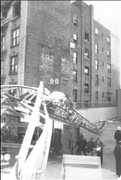
The firefighter quickly climbed up the ladder to assist the man, who would have to squeeze through a narrow window opening to reach the ladder. As he reached the window, however, the man reached out and handed a young child to the firefighter. An instant later a second child was handed out to the firefighter, then the mother began to climb out through the window opening. The firefighter tried to tell her to wait, but he was unable to communicate with any of the family members who did not speak English. The firefighter tried to descend with the two children as the chauffeur started up the ladder to assist him. He was only able to descend two rungs before the mother reached the ladder. She took hold of the outboard side rail and leaned away from the building, which caused the tip of the ladder to slip off the stone sill. As soon as it slipped off the sill the tip dropped and scraped against the brick below the window. Recognizing that the ladder was now unstable, the chauffeur shouted to the firefighter to come down as quickly as possible and turned back to descend himself. Before the firefighter could move, however, the father came through the window opening and dropped two to three feet onto the tip of the ladder. As his weight hit the tip, the ladder began to collapse, dropping quickly to the ground. The 37 year old father died instantly when he hit the ground after falling approximately 50 feet. The firefighter held on to the two children, aged four and six, and rode the ladder down to the ground. The 31 year old mother also held onto the collapsing ladder. All four were treated for serious injuries, including multiple fractures, and were hospitalized in serious, but stable condition. The chauffeur, who was close to the base of the ladder, was thrown to the ground and received less serious injuries. A second alarm was transmitted as many of the firefighters on the scene went to the assistance of the injured civilians and firefighters. The fire was confined to one apartment and controlled with no additional injuries. The entire sequence of events, from the arrival of Ladder 108 at the incident scene until the first radio report of seriously injured personnel, took less than 120 seconds (?FROM U.S. Fire Administration/Technical Report Series Aerial Ladder Collapse Incidents USFA-TR-081/April 1996?)
LAWRENCE J. ARCHER FF. LAD. 108 JUL. 29, 1995 1996 ZAHN

JOHN T. SULLIVAN LT. LAD. 108 2008 CINELLI


JOSEPH ANDRES FF. LAD. 108 AUG. 4, 2016 2016 TREVOR/WARREN
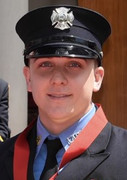
On August 4, 2015, Ladder 108 and Engine 216 responded to the scene of a male patient caught in an open shaft way in Brooklyn, where he was found hanging upside down between the third and fourth floors, held only by a small cable wire wrapped around his leg and ankle. Firefighters Joseph Andres and Fred Dicrescento were ordered to prepare for a possible lifesaving rope rescue. Firefighter Andres climbed the aerial ladder to the roof of the structure and tied the rope to the rungs and beam of the ladder so he could use it as a substantial object, and then tied the slippery hitch around his chest. Firefighter Dicrescento climbed the aerial to the roof, where he checked the security of the knots before securing his personal harness. Roof rope rescues are inherently dangerous and this one had additional dire complications - with no parapet on the roof, cable wires above the patient in which Firefighter Andres could become entangled, and with the patient suspended in mid-air and upside down. He realized that if he put any pressure on the cable wire that was holding the patient, there was a real possibility that the wire would snap, causing the patient to fall. Captain Daniel Keane, Division 11, gave the go ahead for the roof rope operation. Firefighter Dicrescento lowered Firefighter Andres to a position roughly a foot above the patient, where he was able to grab him around the waist. At that exact moment, the cable that was holding the patient snapped, but Firefighter Andres maintained a firm grip on the man, preventing him from falling. Firefighter Andres and the patient were lowered and guided to the 3rd-floor window, where members pulled them both to safety. Firefighter Joseph L. Andres operated at personal risk and exhibited decisive and aggressive actions. His determination and courage are a credit to our Department. He is presented with the Emily Trevor/Mary B. Warren Medal.
EDWARD J. O'CONNOR BAT. CHIEF BAT. 35 APR. 1, 1946 1947 DEPARTMENT
JOSEPH C. DOUGHNEY FF. BAT. 35 JAN. 31, 1969 1970 WAGNER
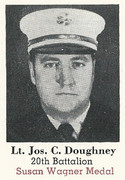
Ladder 108 - 1962:

Engine 216/Ladder 108/Battalion 35 medals:
FREDERICK SCHULTZ FF. ENG. 216 JAN. 22, 1905 1906 BROOKLYN CITIZENS
Fireman Frederick Schultz received the Brooklyn Citizens Medal for rescuing a woman and her two children from a fire at 190 Meserole Street on January 17, 1905.

JOHN C. BAAL FF. ENG. 216 JUL. 1, 1967 1968 SCOTT
The Walter Scott Medal was awarded to Fireman John C. Baal on July 1, 1967. He rescued a man from a window via a scaling ladder at 53 Scholes Street.
ANDREW J. ASHURST FF. ENG. 216 OFF DUTY JAN. 20, 1969 1970 LA GUARDIA
While off duty Fireman Andrew J. Ashurst received the LaGuardia Medal for his rescue of four people from 393 S. 3rd Street on January 20, 1969.

WILLIAM H. HAYES LT. ENG. 216 L-108 JUL. 11, 1992 1993 TREVOR-WARREN
Lieutenant William H. Hayes rescued six occupants of 164 Havemeyer Street on July 11, 1992 and was awarded the Trevor-Warren Medal. He was doing a mutual in Ladder 108 when he made his rescue. Beside these four medals the Company have earned a total of fifteen Unit Citations.
GEORGE A. KELLOCK FF. LAD. 108 FEB. 13, 1902 1903 BROOKLYN CITIZENS

Medal Day 1903:

FERDINAND A. BEYER FF. LAD. 108 NOV. 4, 1914 1915 BROOKLYN CITIZENS



FERDINAND A. BEYER FF LAD. 108 FEB. 24, 1916 1917 BROOKLYN CITIZENS

Captain Beyer was awarded the Brooklyn Citizens Medal for the third time in 1926
LELAND J. WALLACE FF. LAD. 108 FEB. 24, 1916 1917 HURLEY

JOSEPH MAHER FF LAD. 108 FEB. 24, 1916 1917 HUGH BONNER

EDWARD P. MC CONVILLE FF. LAD. 108 AUG. 9, 1924 1925 TREVOR-WARREN

LEO C. FURCHT FF. LAD. 108 AUG. 9, 1924 1925 HUGH BONNER
JOHN E. MESS FF LAD. 108 APR. 24, 1928 1929 BROOKMAN
FREDERICK J. WIDMAYER FF LAD. 108 APR. 24, 1928 1929 BROOKLYN CITIZENS

MICHAEL J. MAXWELL FF. LAD. 108 APR. 7, 1931 1932 BROOKLYN CITIZENS

JOHN L. MC GREEVY LT. LAD. 108 OCT. 17, 1942 1943 MC ELLIGOTT


ANTHONY E. CAFARELLA FF. LAD. 108 FEB. 16, 1945 1946 BROOKLYN CITIZENS

BEN L. ALEXANDRO FF. LAD. 108 FEB. 26, 1948 1949 HUGH BONNER

PAUL A. LUKAS CAPT. LAD. 108 NOV. 26, 1949 1950 COMMERCE
WILLIAM A. LAGHEZZA FF. LAD. 108 FEB. 2, 1963 1964 STIEFEL


RALPH BERNARD FF. LAD. 108 AUG. 31, 1964 1965 PULASKI

ROBERT J. O'CONNELL FF. LAD. 108 JAN. 20, 1964 1965 KENNY


DANIEL J. MARSHALL FF. LAD. 108 APR. 1, 1965 1966 PRENTICE

RICHARD R. PAGANI FF. LAD. 108 OCT. 5, 1966 1967 BROOKLYN CITIZENS

THOMAS A. WILLIAMS FF. LAD. 108 APR. 12, 1967 1968 HOLY NAME

VINCENT J. FOWLER LT. LAD. 108 JAN. 6, 1968 1969 DELEHANTY


WWII USMC - Retired BC ? father of Captain Vincent Fowler 1999 LODD
ROBERT J. O'CONNELL FF. LAD. 108 JAN. 6, 1968 1969 BROOKMAN

KENNETH E. GREEN FF. LAD. 108 JUL. 30, 1972 1973 COLUMBIA
GILBERT J. MURTHA FF. LAD. 108 JAN. 15, 1973 1974 JAMES GORDON BENNETT

One afternoon in January, 1973, a Brooklyn mother and her two shall children were trapped in ?an oven‐like atmosphere? as fire raged through the apartment below them, their only escape ?a leap to almost certain death at the base of an interior courtyard.?
Firemen First Grade Gilbert J. Murtha saved them and yesterday, while his own wife and four children watched proudlyy, Mayor Beame placed a red rib bon around his neck, bearing the Fire Department's oldest and highest medal.
The honor, the James Gordon Bennett Medal, first awarded in 1869, was one of a series given yesterday to firemen who had risked their lives to save others. The presentations were made at a ceremony in the Pace University gymnasium.
A big banner hung behind the row of blue‐uniformed firemen sitting in the bleachers: ?Ladder Co. 108; ?the pride of Williamsburg? salutes Gil Murtha, the pride of Ladder Co. 108.?
His wife, Arlene, and their four children?Helene, 10 years old; Dianne, 8, John, 4, and Neil, 1?were ushered forward a moment before Mr. Murtha marched forward, leaned to let the Mayor drape his medal around his neck, saluted Mr. Beame and Fire Commissioner John T. Megan, then, grinning, posed for a family photograph.
BERNARD H. MULLEN FF. LAD. 108 FEB. 17, 1974 1975 KENNY


HENRY ZUERCHER CAPT. LAD. 108 FEB. 17, 1974 1975 SCOTT

CHARLES R. BOYCE FF. LAD. 108 JUN. 27, 1974 1975 BROOKLYN CITIZENS

USAF Korean War
NORBERT R. MEEHAN LT. LAD. 108 JAN. 12, 1977 1978 BRUMMER
JOHN J. DOHERTY LT. LAD. 108 JAN. 23, 1978 1979 HUGH BONNER
HARRY S. FORD FF. LAD. 108 NOV. 12, 1978 1979 CRIMMINS

LODD - Father's Day 2001:
Father's Day in 2001, the FDNY lost 3 members at a fire led to explosion in a Hardware store in Astoria, Queens. Numerous members were injured. Firefighter Brian Fahey R-4, Firefighter Harry Ford R-4 & Firefighter John Downing TL-163 were buried alive as numerous members worked above to clear rubble & extinguish the flames to reach their brothers.
On June 17, Father's Day, the Long Island General Supply Company, a hardware store in Astoria, caught fire when a teenager rummaging for a can of spray paint outside the store knocked over a jug of gasoline, which leaked into the basement and was ignited by the pilot light from a water heater.
The fire, which has since been ruled an accident, touched off an explosion that killed Firefighters Harry Ford, 50, Brian Fahey, 46, and John J. Downing, 40, trapping one of them in a smoke-filled corner and crushing the other two under a wall that collapsed.
Capt. Jack Corcoran, a battalion chief who had been the commander of Mr. Ford's rescue company, shared some affectionate stories about Mr. Ford with the congregation. He told of Mr. Ford encountering a muck-a-muck at a fire ("and we know how much Harry loved muck-a-mucks"), who informed Mr. Ford, "I'm in charge here." Whereupon Mr. Ford replied, "Yeah, you're in charge of what you do and we're in charge of everything you don't do."
Mayor Giuliani told of how Mr. Ford had once rescued a baby in a crib from a fire, and another time, while off duty and without protective gear, saved 10 people from a burning building. On yet another occasion, he was home asleep in his apartment when he smelled smoke. Once he had hurried outside the building, someone said an elderly man was trapped inside. In his bare feet, Mr. Ford dashed in and carried the man out.
The Rev. John Delendick, a Fire Department chaplain, who presided over the service, said that around the firehouse, Mr. Ford had a signature phrase. "When he left, he'd say, 'Ta-ta, fellas,'" he said. "And that's what he's saying now."
Once the ceremony ended, the coffin was placed back onto the fire truck. A bugler played taps. A formation of six police helicopters droned overhead.
Ford is survived by his wife, two sons and a stepdaughter.
THOMAS J. GREANEY FF. LAD. 108 JAN. 23, 1978 1979 DELEHANTY

LIEUTENANT THOMAS J. GREANEY - died January 5, 2014 from World Trade Center-related ilness
RICHARD C. DENNINGER FF. LAD. 108 FEB. 24, 1980 1981 THOMPSON


THOMAS A. ROACH FF. LAD. 108 JUN. 20, 1983 1984 LA GUARDIA

MICHAEL J. HIGGINS FF. LAD. 108 JAN. 16, 1986 1987 ZAHN

GREGORY J. SMITH, JR. FF. LAD. 108 NOV. 20, 1994 1995 NYS HONORARY FIRE CHIEFS
GREGORY J. SMITH, JR. FF. LAD. 108 NOV. 20, 1994 1995 JAMES GORDON BENNETT

?Fire Department Ladder Buckles, and a Father Dies? By LYNETTE HOLLOWAY NOV. 21, 1994
It seemed that the entire family was going to make it to safety yesterday afternoon as yellow and orange flames licked out of a rambling apartment building in a mostly industrial section of Brooklyn.
Standing on a 91-foot aluminum alloy ladder that extended from a fire truck, Firefighter Greg Smith was carrying two children who had been handed through a smoky sixth-floor window on the side of the building by their parents. The parents came next, and the firefighter stepped down a rung to make room.
But something went wrong and the ladder began to buckle about six or seven rungs from the bottom and twist to the right. The parents jumped, fire officials said, landing on a parking lot. The father died, and the mother was critically injured.
Firefighter Smith clung to the two children, cushioning their fall, as the ladder crashed to the ground, said Robert C. Broderick, a New York City Fire Department spokesman.
The father was identified as Ireno Espanosa. The mother, Aqueda Santana, 40, and her children, 4-year-old Edwin Espanosa and 6-year-old Lissetto Espanosa, were listed in critical condition at Bellevue Hospital Center.
Firefighter Smith, 35, from Ladder Company 108 in Williamsburg, was in serious but stable condition last night at Bellevue. Four other people, including one more firefighter, were treated for smoke inhalation, Mr. Broderick said.
More than 50 neighbors and on-lookers screamed when the parents plunged as the blaze raced through the front of the building at 252 South Fourth Street in Williamsburg. Some witnesses said the boy slipped from the firefighter's arms and fell off the ladder, conflicting with fire department reports. They also said it appeared that the two adults fell, rather than jumped. Mr. Broderick said details were still being sorted out, but it appeared all department procedures had been followed.
The two-alarm fire started about 1 P.M. on the fifth-floor of the building, which has 20 apartments, Mr. Broderick said. A call reporting the fire came at 1:02 P.M., he said. Everyone else in the building escaped, he said.
When the fire trucks arrived, witnesses said, the father held the boy, dressed in blue pajamas, out the window and screamed "Cojalo, cojalo" -- catch him, catch him.
"All five of them were on top of the ladder," said Edgar Cruz, 18, a neighbor. "It went crashing to the ground. The ladder toppled to the right. As the ladder was coming down, the baby boy dropped to the side. Everybody just screamed."
The second alarm sounded at 1:10 P.M., almost two minutes after the ladder collapsed, Mr. Broderick said. The fire was under control at 1:34 P.M., he said. Fire officials said the cause of the blaze was not known.
In a press conference in the main lobby of Bellevue, Fire Commissioner Howard Safir said it was unclear exactly why the ladder collapsed.
"We're not ruling out anything until we have a full investigation by our safety battalion," Mr. Safir said, shortly after Mayor Rudolph W. Giuliani visited the injured firefighters and the families of the victims at the hospital."To the best of my knowledge, department rules were followed," he said.
He said the ladder truck was about 3 years old, purchased by the department in 1991 for $500,000. Like all other fire department vehicles, it undergoes routine maintenance checks. Mr. Safir said he did not know when the ladder involved in the accident was last checked, but he said that it was in compliance with department standards.
Mr. Safir said that at the time of the accident, the ladder was extended to its full length, 91 feet, and that only the top rung rested on the building. He said he did not know why the truck was not pulled closer to the building, into an empty parking lot, where the ladder later crashed.
Mr. Broderick said the type of ladder that failed yesterday had been used by the department for more than two decades. It is called a Seagrave Rear-mount Aerial ladder that attaches to the rear of the truck rather than the midsection.
Mr. Safir said, "We're not about to limit the use of this apparatus until we have an indication that this is anything but an aberration."
Hours after the fire, firefighters worked to clean up the debris. The ladder was bent arching crookedly over the sidewalk, resting in the parking lot of Funeral Home Ortiz. The ladder had a sign that said "Pride of Williamsburg."
Fire engine ladders are raised hydraulically and extended by cable and then pulled back slightly so that the locks grip. Firefighters at the scene said they did not know if the ladder had been locked into position.
The fire apparently moved quickly through the well-kept building that sits next to the Brooklyn-Queens-Expressway on South Fourth Street near Borinquen Place and Havemeyer Street. The building's ground floor is mostly stores including a bodega and a Pentecostal church.
Edwin Hernandez, 34, who lives across the street from the building, said he was on his way home from church with his wife when he saw flames coming out of the windows on the top two floors of the building. Mr. Hernandez like many other neighbors knew little about the family.
"I was going upstairs to put my Bible away, but I saw flames and so I gave the Bible to my wife and I went into the building to save people. I knocked on doors. I found a woman and two little girls and I brought them downstairs."
Chief James P. Duggan of the 35th Battalion said: "In my 31 years in the department, I have never seen a ladder collapse like this.I have read articles about it. I have heard of it. Seagrave must have reasons why this happens."
https://www.usfa.fema.gov/downloads/pdf/publications/tr-081.pdf
U.S. Fire Administration/Technical Report Series USFA-TR-081/April 1996
Time Sequence--Brooklyn Box 224 11-20-94
1302 Telephone alarm for 252 S 4th Street, reported fire on the 4th floor.
Dispatched: E221 E216 L104 L108 BN35 E229 1303
Additional Dispatch: RS2, SQ1 1304
Additional reports indicate working fire on 4th or 5th floor of a 6-story occupied multiple dwelling
1305 Engine 221 On Scene reports 10-75 (working fire)
1305 L108 10-84 (on scene)
1306 Mayday--seriously injured firefighters from ladder collapse
NEW YORK CITY INCIDENT A 100 foot aerial ladder collapsed as firefighters were attempting to rescue a family from their sixth floor apartment in the Williamsburg section of Brooklyn, early on a Sunday afternoon, November 20, 1994. Smoke and flames were issuing from a fifth floor apartment on the front side of the six story building when the first alarm companies arrived. Smoke and heat conditions were building-up rapidly on the sixth floor, trapping the family of two adults and two children in their apartment. The first arriving ladder company, Ladder 104, stopped in front of the building and raised their aerial ladder to the fifth floor, adjacent to the fire apartment (see Figure 1). In this situation the second due ladder company, Ladder 108, is expected to provide a ladder to the roof. Because Ladder 104 is a tractor trailer apparatus and several other vehicles were parked on the street in front of the fire building, Ladder 108 had limited access to position their apparatus within reach of the building. Ladder 108 stopped at the intersection so that the officer could evaluate the situation. The street changes direction between the intersection and the fire building, resulting in a wide triangular-shaped sidewalk area. Ladder 108 was positioned on this sidewalk area to obtain the best position to ladder the roof for vertical ventilation. After positioning the truck, the chauffeur went to the rear and began to lower the outriggers for ladder operations.
A firefighter, who was assigned to perform outside ventilation, dismounted from the right side of the vehicle and almost immediately heard someone calling for help. He spotted the father leaning out through a sixth floor window at the side of the building. There was smoke coming from the window and from adjacent windows on the fifth and sixth floors, indicating that the man was in imminent danger. He appeared to be in great distress and in need of immediate rescue. The window is on the side of the building, approximately 30 feet back from the sidewalk, overlooking a fenced-in parking area (see Figure 2). When the building was originally constructed this window would have opened into a lightwell between two similar buildings; however, the adjacent building has been demolished, leaving the window exposed. The area directly below the window is a fenced-in setback. The firefighter advised the chauffeur of the rescue situation; however, the chauffeur did not actually see the man until he reached the operating pedestal. At that point he recognized that the window was beyond the recommended reach of the aerial ladder, but within its physical reach capabilities. The window could not be reached with any of the portable ground ladders that are carried on the apparatus. Repositioning the truck to reduce the horizontal reach would have taken several minutes. The chauffeur would have had to raise and retract the outriggers, back out into the intersection, turn around in the street, then maneuver the truck backward between parked vehicles, around the other fire apparatus and through the narrow opening into the parking lot below the window. It appeared that time was critical due to the man?s excited condition, and the chauffeur believed that it would be feasible to rescue the man with the tip of the ladder supported by the building. After quickly considering the alternatives, the chauffeur decided to attempt the rescue. He was able to position the ladder with the tip of the left beam resting on the sill of the window where the man was located.
Sequence of Events at New York City Ladder Collapse
1. Ladder is placed with the tip of the left beam on the window sill. One firefighter ascends to the tip to initiate rescues.
2. Two adults and two small children evacuate onto the tip of the ladder. Their weight causes the tip of the ladder to slip off the window sill.
3. The weight causes bending stress in the ladder. Contact with the wall adds a twisting component.
4. The bending creates tension forces in the handrails and compression forces in the beam of the ladder. The bending stress increases with distance from the unsupported tip of the ladder.
5. The ladder fails just above the base. The twisting failure occurred in the lower right bed section, collapsing the ladder to the right side. The primary failure in the bed section caused secondary failures in the fly sections.

The firefighter quickly climbed up the ladder to assist the man, who would have to squeeze through a narrow window opening to reach the ladder. As he reached the window, however, the man reached out and handed a young child to the firefighter. An instant later a second child was handed out to the firefighter, then the mother began to climb out through the window opening. The firefighter tried to tell her to wait, but he was unable to communicate with any of the family members who did not speak English. The firefighter tried to descend with the two children as the chauffeur started up the ladder to assist him. He was only able to descend two rungs before the mother reached the ladder. She took hold of the outboard side rail and leaned away from the building, which caused the tip of the ladder to slip off the stone sill. As soon as it slipped off the sill the tip dropped and scraped against the brick below the window. Recognizing that the ladder was now unstable, the chauffeur shouted to the firefighter to come down as quickly as possible and turned back to descend himself. Before the firefighter could move, however, the father came through the window opening and dropped two to three feet onto the tip of the ladder. As his weight hit the tip, the ladder began to collapse, dropping quickly to the ground. The 37 year old father died instantly when he hit the ground after falling approximately 50 feet. The firefighter held on to the two children, aged four and six, and rode the ladder down to the ground. The 31 year old mother also held onto the collapsing ladder. All four were treated for serious injuries, including multiple fractures, and were hospitalized in serious, but stable condition. The chauffeur, who was close to the base of the ladder, was thrown to the ground and received less serious injuries. A second alarm was transmitted as many of the firefighters on the scene went to the assistance of the injured civilians and firefighters. The fire was confined to one apartment and controlled with no additional injuries. The entire sequence of events, from the arrival of Ladder 108 at the incident scene until the first radio report of seriously injured personnel, took less than 120 seconds (?FROM U.S. Fire Administration/Technical Report Series Aerial Ladder Collapse Incidents USFA-TR-081/April 1996?)
LAWRENCE J. ARCHER FF. LAD. 108 JUL. 29, 1995 1996 ZAHN

JOHN T. SULLIVAN LT. LAD. 108 2008 CINELLI


JOSEPH ANDRES FF. LAD. 108 AUG. 4, 2016 2016 TREVOR/WARREN

On August 4, 2015, Ladder 108 and Engine 216 responded to the scene of a male patient caught in an open shaft way in Brooklyn, where he was found hanging upside down between the third and fourth floors, held only by a small cable wire wrapped around his leg and ankle. Firefighters Joseph Andres and Fred Dicrescento were ordered to prepare for a possible lifesaving rope rescue. Firefighter Andres climbed the aerial ladder to the roof of the structure and tied the rope to the rungs and beam of the ladder so he could use it as a substantial object, and then tied the slippery hitch around his chest. Firefighter Dicrescento climbed the aerial to the roof, where he checked the security of the knots before securing his personal harness. Roof rope rescues are inherently dangerous and this one had additional dire complications - with no parapet on the roof, cable wires above the patient in which Firefighter Andres could become entangled, and with the patient suspended in mid-air and upside down. He realized that if he put any pressure on the cable wire that was holding the patient, there was a real possibility that the wire would snap, causing the patient to fall. Captain Daniel Keane, Division 11, gave the go ahead for the roof rope operation. Firefighter Dicrescento lowered Firefighter Andres to a position roughly a foot above the patient, where he was able to grab him around the waist. At that exact moment, the cable that was holding the patient snapped, but Firefighter Andres maintained a firm grip on the man, preventing him from falling. Firefighter Andres and the patient were lowered and guided to the 3rd-floor window, where members pulled them both to safety. Firefighter Joseph L. Andres operated at personal risk and exhibited decisive and aggressive actions. His determination and courage are a credit to our Department. He is presented with the Emily Trevor/Mary B. Warren Medal.
EDWARD J. O'CONNOR BAT. CHIEF BAT. 35 APR. 1, 1946 1947 DEPARTMENT
JOSEPH C. DOUGHNEY FF. BAT. 35 JAN. 31, 1969 1970 WAGNER

Engine 216/Ladder 108/Battalion 35 (continued)
Engine 216/Ladder 108/Battalion 35 LODDs:
CAPTAIN WILLIAM BALDWIN ENGINE 216 JANUARY 20, 1880
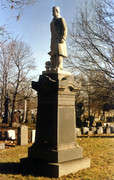
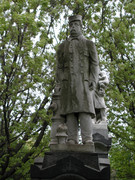
Capt. William Baldwin, Engine 16 BFD, died as a result of injuries sustained January 14th, when he was
caught under a collapsing wall while operating at a brewery fire. He was the 1st member of the Brooklyn FD to make the Supreme Sacrifice.
Foreman (Captain) William Baldwin, January 20, 1880, collapse
"At seven o'clock on the morning of January 14, 1880, a fire broke out in Otto Huber's brewery, on old Bushwick Avenue. Engine No. 16 assisted in fighting the flames. In half an hour the fire was under control; when without a second's warning one end of the building collapsed. Six firemen, including Baldwin, were buried in the debris. Willing hands rescued them, and all recovered with the exception of Baldwin, who died six days afterward in St. Catherine's hospital. He left a wife and three children to mourn his loss. Baldwin had always been a favorite with his brother firemen, and his death threw a gloom over the whole Department. He had been with it for eight years; five years of which he was Foreman of Engine Company No. 16. The interment took place on Thursday January 22. The funeral service was read in the South Third Street M.E. Church, and the body was laid in the firemen's plot at "The Evergreens." At the graveside were Chief Nevens and his subordinate engineers, the Foreman and two men from every company in the Eastern District; the entire company with which the deceased was connected; members of the Fire and Building department and many others. On Friday evening, February 20, a performance of Camille was given in the Academy of Music, and also one at the Novelty Theatre, which realized $5,505 for the widow and children. She also received $250 from the Fire Department Fund, of which, the dead fireman was a member." (from "Our Firemen - The Official History of the Brooklyn Fire Department"
LIEUTENANT RAYMOND SCHEIBEL ENGINE 216 (ASSIGNED ENGINE 221) March 5, 1995
The second member to lose his life was Lieutenant Raymond Schiebel of Engine 221. He was working overtime in Engine 216 on the night of March 5, 1995. The company was operating at 128 Hayward Street in a heavy smoke condition when Lt. Schiebel suffered a heart attack. He died on March 7 from the effects of the heart attack. He lived in Bethpage, Long Island with his wife and three children.
A Firefighter Dies, and With Him a Firehouse's Source of Strength
By N. R. KLEINFIELD MARCH 8, 1995 NY TIMES
For the firefighters of Engine Company No. 221 in Williamsburg, Brooklyn, it was the sort of wrenching problem that begged to be talked over with a good listener. A beloved member of the company died yesterday in the hospital. Yet, it was a workday. So you had to bottle your grief and be ready and willing to fight fires.
This was precisely the type of matter the firefighters would take to Lieut. Raymond F. Schiebel, the resident father confessor, Mr. Advice and chief sounding board of the firehouse. In fact, if you needed to talk over anything at all, he was the willing ear.
The trouble was, it was Lieutenant Schiebel who died in that hospital bed.
And so, all the firefighters could do was pray on their own. In the firehouse kitchen, the cluttered room with the stove and the sofa and the big table where the firefighters liked to say they could be "human" rather than fearless warriors, they had propped up a photograph of the lieutenant and his wife. They had lit a candle next to it....
At the time of the incident, he was on loan to nearby Engine Company 216. He had volunteered because he wanted to save up a day off so that he could attend his daughter's Sweet 16 party later this month. As a firefighter, he was known for consummate courage. As a human being, he was known as a rollicking, good-natured ham. "He's like a father figure," Benjamin Suarez, a firefighter in his company, said of the lieutenant, a 25-year veteran. "You would talk to him about domestic problems or work problems. He would always have advice. He was a people's person. He could get along with anybody. And when you went out with him, you knew you had one of the best officers in front of you. When he led the way into a fire, you knew all the men were going to come out of there."
The firefighters could tell when Lieutenant Schiebel, 49, was doing his paperwork in his office. His stereo was on low, always tuned to 60's-vintage golden oldies. They could tell when he was done with his work. The volume would go up. They could tell when he was heading their way. They could hear him singing the tunes. He loved his soft rock. So they called him Rockin' Ray.
"There's no question, he was the life of the firehouse," said Lieut. Gary Wendell. "He was a happy-go-lucky person. That's why we're all numb."
Firefighters do not receive large salaries, and they seem appreciably smaller when there are three children at home. Lieutenant Schiebel drove a 1975 Chevy until it screamed to be driven no more. His colleagues pointed out that of the 50 firefighters who worked out of the firehouse, the lieutenant owned the oldest car. He, in turn, would always tell the firefighters that an old car was more reliable. Recently, though, he bought a new car -- from his vantage point, that is. It was a 10-year-old Ford Bronco.
He lived in Bethpage, L.I., in a modest house bearing a shamrock for St. Patrick's Day. He and his wife, Valerie, married shortly after he returned from duty in Vietnam.
They have three children: Carol, 19, Kristine, 15, and Gregory, 11.
The lieutenant knew more gossip than Suzy does -- though, to be sure, all of it dealt with the inner tribulations of Bethpage. Everyone seemed to know him. He liked to circle the neighborhood on his bicycle. Fond of the beach, he always found space in his car to take extra children along on beach excursions. He also relished Lionel model trains, and had built a collection.
You couldn't tell him something and expect him to forget it. He had a magpie mind. Listen to John Rizzo, a firefighter in his company:
"We were sitting here the other night talking about a job and he says, 'That was Sept. 23, 1979.' I look at him and say, 'Ray, you remember that?' He said, 'Well, we got a unit citation.' I said, 'Ray, I don't remember my own birthday. You remember when we got a unit citation?' Anything that he heard, it was like it was inputted into a computer."
He always wanted to fight fires, and never regretted it. "He loved being a firefighter," Mr. Suarez said.
Mayor Rudolph W. Giuliani appeared at the hospital shortly after the lieutenant died. He said the lieutenant's full and extended family, including members of the department that he had served for a quarter-century, were present in the room when the machines could do nothing more.
All day yesterday, people who live in the blocks surrounding Engine Company 221 dropped into the firehouse, seeking news. They, too, all knew the lieutenant.
Maria Camacho, who lives next door to the firehouse, said: "He's the best. He always had a smile on his face, and was always singing. A month ago, one of the neighbors was sick. He had taken the wrong pill. The lieutenant was the first one up there, helping him. That was him -- the best."
FIREFIGHTER DANIEL SUHR ENGINE 216 September 11, 2001
World Trade Center - September 11, 2001


https://www.firehero.org/fallen-firefighter/daniel-t-suhr/
http://www.legacy.com/sept11/story.aspx?personid=93191
LIEUTENANT GEORGE F. MCGEARY LADDER 108 March 2, 1905

FIREFIGHTER JOSEPH LaGRANGE LADDER 108 May 20, 1932
Fireman Joseph LaGrange was killed when Ladder 108 and Engine 213 collided at the intersection of Boerum and Lorimer Streets. Engine 213 came out of Leonard Street and turned out onto Boerum Street as Ladder 108 was just behind them. The tillerman of Ladder 108 trying to avoid an accident, swung the tiller around and side-swiped the engine. The ladder truck was thrown into an iron fence of Public School 41, killing Fireman LaGrange. A five-year old boy confessed to pulling the fire alarm box for a false alarm. (From "The Last Alarm")
BATTALION CHIEF MICHAEL E. C. GRAHAM BATTALION 35 February 14, 1909
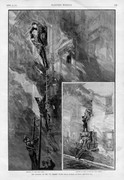
On April 7, 1884, Firemen Michael E. C. Graham, Thomas F. Barrett and John Binns, made a daring and dramatic rescue of Louis Castaing, the sixteen-year-old elevator boy, at a fire in the St. George Flats. It was the first time that the scaling or "pompier" ladders were used by the FDNY.


On February 14, 1909 fire visited the canning department of the Standard Oil Company's Pratt Oil Works plant. The complex was located on Kent Avenue from North 12th Street to Newtown Creek and along the East River. The fire building was two stories high and measured 75 feet wide, 100 feet along the water with a 75 by 300 foot long building and pier abutting it going into the East River. This building was used to pack cans of oil, naphtha and benzene, that were placed in cardboard boxes and shipped overseas. It was the most dangerous part of the operations and the building was away from the other buildings. Battalion Chief Michael E. C. Graham, with the members of Ladder 108, had been operating near the front door of the building. The three-alarm fire started around 10 o'clock at night and after two and half-hours the front wall collapsed injuring all the members of Ladder 108 and the Chief. His back and both legs were broken when he was hit by the thick blue stone cornice from the upper floors. He died the next morning. (From "The Last Alarm")
RIP. Never forget.
Engine 216/Ladder 108/Battalion 35 LODDs:
CAPTAIN WILLIAM BALDWIN ENGINE 216 JANUARY 20, 1880


Capt. William Baldwin, Engine 16 BFD, died as a result of injuries sustained January 14th, when he was
caught under a collapsing wall while operating at a brewery fire. He was the 1st member of the Brooklyn FD to make the Supreme Sacrifice.
Foreman (Captain) William Baldwin, January 20, 1880, collapse
"At seven o'clock on the morning of January 14, 1880, a fire broke out in Otto Huber's brewery, on old Bushwick Avenue. Engine No. 16 assisted in fighting the flames. In half an hour the fire was under control; when without a second's warning one end of the building collapsed. Six firemen, including Baldwin, were buried in the debris. Willing hands rescued them, and all recovered with the exception of Baldwin, who died six days afterward in St. Catherine's hospital. He left a wife and three children to mourn his loss. Baldwin had always been a favorite with his brother firemen, and his death threw a gloom over the whole Department. He had been with it for eight years; five years of which he was Foreman of Engine Company No. 16. The interment took place on Thursday January 22. The funeral service was read in the South Third Street M.E. Church, and the body was laid in the firemen's plot at "The Evergreens." At the graveside were Chief Nevens and his subordinate engineers, the Foreman and two men from every company in the Eastern District; the entire company with which the deceased was connected; members of the Fire and Building department and many others. On Friday evening, February 20, a performance of Camille was given in the Academy of Music, and also one at the Novelty Theatre, which realized $5,505 for the widow and children. She also received $250 from the Fire Department Fund, of which, the dead fireman was a member." (from "Our Firemen - The Official History of the Brooklyn Fire Department"
LIEUTENANT RAYMOND SCHEIBEL ENGINE 216 (ASSIGNED ENGINE 221) March 5, 1995
The second member to lose his life was Lieutenant Raymond Schiebel of Engine 221. He was working overtime in Engine 216 on the night of March 5, 1995. The company was operating at 128 Hayward Street in a heavy smoke condition when Lt. Schiebel suffered a heart attack. He died on March 7 from the effects of the heart attack. He lived in Bethpage, Long Island with his wife and three children.
A Firefighter Dies, and With Him a Firehouse's Source of Strength
By N. R. KLEINFIELD MARCH 8, 1995 NY TIMES
For the firefighters of Engine Company No. 221 in Williamsburg, Brooklyn, it was the sort of wrenching problem that begged to be talked over with a good listener. A beloved member of the company died yesterday in the hospital. Yet, it was a workday. So you had to bottle your grief and be ready and willing to fight fires.
This was precisely the type of matter the firefighters would take to Lieut. Raymond F. Schiebel, the resident father confessor, Mr. Advice and chief sounding board of the firehouse. In fact, if you needed to talk over anything at all, he was the willing ear.
The trouble was, it was Lieutenant Schiebel who died in that hospital bed.
And so, all the firefighters could do was pray on their own. In the firehouse kitchen, the cluttered room with the stove and the sofa and the big table where the firefighters liked to say they could be "human" rather than fearless warriors, they had propped up a photograph of the lieutenant and his wife. They had lit a candle next to it....
At the time of the incident, he was on loan to nearby Engine Company 216. He had volunteered because he wanted to save up a day off so that he could attend his daughter's Sweet 16 party later this month. As a firefighter, he was known for consummate courage. As a human being, he was known as a rollicking, good-natured ham. "He's like a father figure," Benjamin Suarez, a firefighter in his company, said of the lieutenant, a 25-year veteran. "You would talk to him about domestic problems or work problems. He would always have advice. He was a people's person. He could get along with anybody. And when you went out with him, you knew you had one of the best officers in front of you. When he led the way into a fire, you knew all the men were going to come out of there."
The firefighters could tell when Lieutenant Schiebel, 49, was doing his paperwork in his office. His stereo was on low, always tuned to 60's-vintage golden oldies. They could tell when he was done with his work. The volume would go up. They could tell when he was heading their way. They could hear him singing the tunes. He loved his soft rock. So they called him Rockin' Ray.
"There's no question, he was the life of the firehouse," said Lieut. Gary Wendell. "He was a happy-go-lucky person. That's why we're all numb."
Firefighters do not receive large salaries, and they seem appreciably smaller when there are three children at home. Lieutenant Schiebel drove a 1975 Chevy until it screamed to be driven no more. His colleagues pointed out that of the 50 firefighters who worked out of the firehouse, the lieutenant owned the oldest car. He, in turn, would always tell the firefighters that an old car was more reliable. Recently, though, he bought a new car -- from his vantage point, that is. It was a 10-year-old Ford Bronco.
He lived in Bethpage, L.I., in a modest house bearing a shamrock for St. Patrick's Day. He and his wife, Valerie, married shortly after he returned from duty in Vietnam.
They have three children: Carol, 19, Kristine, 15, and Gregory, 11.
The lieutenant knew more gossip than Suzy does -- though, to be sure, all of it dealt with the inner tribulations of Bethpage. Everyone seemed to know him. He liked to circle the neighborhood on his bicycle. Fond of the beach, he always found space in his car to take extra children along on beach excursions. He also relished Lionel model trains, and had built a collection.
You couldn't tell him something and expect him to forget it. He had a magpie mind. Listen to John Rizzo, a firefighter in his company:
"We were sitting here the other night talking about a job and he says, 'That was Sept. 23, 1979.' I look at him and say, 'Ray, you remember that?' He said, 'Well, we got a unit citation.' I said, 'Ray, I don't remember my own birthday. You remember when we got a unit citation?' Anything that he heard, it was like it was inputted into a computer."
He always wanted to fight fires, and never regretted it. "He loved being a firefighter," Mr. Suarez said.
Mayor Rudolph W. Giuliani appeared at the hospital shortly after the lieutenant died. He said the lieutenant's full and extended family, including members of the department that he had served for a quarter-century, were present in the room when the machines could do nothing more.
All day yesterday, people who live in the blocks surrounding Engine Company 221 dropped into the firehouse, seeking news. They, too, all knew the lieutenant.
Maria Camacho, who lives next door to the firehouse, said: "He's the best. He always had a smile on his face, and was always singing. A month ago, one of the neighbors was sick. He had taken the wrong pill. The lieutenant was the first one up there, helping him. That was him -- the best."
FIREFIGHTER DANIEL SUHR ENGINE 216 September 11, 2001
World Trade Center - September 11, 2001


https://www.firehero.org/fallen-firefighter/daniel-t-suhr/
http://www.legacy.com/sept11/story.aspx?personid=93191
LIEUTENANT GEORGE F. MCGEARY LADDER 108 March 2, 1905

FIREFIGHTER JOSEPH LaGRANGE LADDER 108 May 20, 1932
Fireman Joseph LaGrange was killed when Ladder 108 and Engine 213 collided at the intersection of Boerum and Lorimer Streets. Engine 213 came out of Leonard Street and turned out onto Boerum Street as Ladder 108 was just behind them. The tillerman of Ladder 108 trying to avoid an accident, swung the tiller around and side-swiped the engine. The ladder truck was thrown into an iron fence of Public School 41, killing Fireman LaGrange. A five-year old boy confessed to pulling the fire alarm box for a false alarm. (From "The Last Alarm")
BATTALION CHIEF MICHAEL E. C. GRAHAM BATTALION 35 February 14, 1909

On April 7, 1884, Firemen Michael E. C. Graham, Thomas F. Barrett and John Binns, made a daring and dramatic rescue of Louis Castaing, the sixteen-year-old elevator boy, at a fire in the St. George Flats. It was the first time that the scaling or "pompier" ladders were used by the FDNY.


On February 14, 1909 fire visited the canning department of the Standard Oil Company's Pratt Oil Works plant. The complex was located on Kent Avenue from North 12th Street to Newtown Creek and along the East River. The fire building was two stories high and measured 75 feet wide, 100 feet along the water with a 75 by 300 foot long building and pier abutting it going into the East River. This building was used to pack cans of oil, naphtha and benzene, that were placed in cardboard boxes and shipped overseas. It was the most dangerous part of the operations and the building was away from the other buildings. Battalion Chief Michael E. C. Graham, with the members of Ladder 108, had been operating near the front door of the building. The three-alarm fire started around 10 o'clock at night and after two and half-hours the front wall collapsed injuring all the members of Ladder 108 and the Chief. His back and both legs were broken when he was hit by the thick blue stone cornice from the upper floors. He died the next morning. (From "The Last Alarm")
RIP. Never forget.
Engine 216/Ladder 108/Battalion 35 (continued)
Midtown Blogger/Manhattan Valley Follies Thursday, August 6, 2015
FDNY- FF's in Brooklyn Rescue FIREFIGHTERS USE ROPES TO SAVE MAN DANGLING IN BROOKLYN
Firefighter Matthew Regis of Ladder Company 108, balancing on the angle line to stabilize the victim.

Tuesday, August 4, at 2111, members of Ladder Company 108 and Engine Company 216 received a ticket for reports of a jumper-down on Hooper Street in Brooklyn. Arriving on-scene and finding a man suspended by a foot entangled in a wire they affected a joint high-angle rescue operation using the ropes.
On their approach to the address, Captain Daniel Keane of Ladder Company 108 requested further details from dispatch; however, they reached the location before those were provided. On-scene they were unable to initially find the victim who was in a rear shaft-way of the 4-story non-fireproof building through a narrow alleyway that would prove unreachable by the aerial ladder.
"It was strange, and precarious because we didn't know what to expect," said Captain Keane. "But everyone did everything that was needed and worked as a great team."
Pointed in the right direction by bystanders, Firefighter Matthew Regis of Ladder 108 proceeded through the alleyway to the 2-3 corner of the building where he saw a man dangling, by his right foot caught by wires at approximately 30-feet above the third floor.
Firefighter Regis called for the Chauffer, Fred DiCrescento, to reposition the aerial as he climbed the single fire escape to the first floor and then pulled himself to the angle-iron, where he balanced on the inch thick rod.
In the meantime, the members of Engine Company 216 proceeded to the scene, with Lieutenant Leo Tineo entering the third floor and positioning himself in the window near the victim and above Firefighter Regis. Firefighter Regis stabilized the victim by his left elbow using his webbing, then stabilized his right elbow using Lt. Tineo's webbing. By stabilizing the victim, they ensured that if the cables were to give then he would only fall approximately 10-feet and not to the ground.
"It was just a matter of everyone doing the job and coordinating," said Tineo. "This was a very fortunate soul."
Members from 216 and 108 brought the 35-foot and 12-foot ladders to the shaft-way. With Firefighter Steven McCann of Engine Company 216 on the 35-foot ladder, and members in each window, they passed the 12-foot ladder through facing windows, giving Regis a more stable footing.
"This was such an oddball event, but it went perfectly," Firefighter Regis said. "With the teamwork of educated and motivated members, and the leadership – it was all well taken care of."
DiCrescento brought the aerial within reach of the roof as Firefighter Joseph Andreas ascended and used a substantial object knot to secure himself to a beam and rail on the roof using a bowline, then a snap hitch to connect to DiCrescento who was now on the roof, as well. Captain Keane now reviewed the objective: Andreas was to repel from the roof and grab the victim by the waist, stabilize him as Firefighter Regis (on the angle-iron) pushed him towards the window and Firefighter McCann (on the 35-foot ladder) snipped the lines in which he was entangled. The go-ahead was given.
Andreas went over the ledge, guided from the ground by Firefighter Michael Chiesa with Lt. Coyle supervising his safety; both came with Ladder Company 146 as assistance was necessary in this complex and unusual operation.
Lowering himself to the victim, Andreas became briefly entangled by the same ropes, but was able to free himself and proceed. Just in time, he bear-hugged the screaming victim as the cable suspending him from the ceiling broke. They were both pulled into the third floor window and Lt. Tineo with help from Regis who was still on the platform made by the 12-foot ladder.
"I was a bit nervous, but all you could think about is saving this guy," said Andreas. "It was just like we trained at Probie School and in the house, and communication between the companies had a huge role in making it work."



Midtown Blogger/Manhattan Valley Follies Thursday, August 6, 2015
FDNY- FF's in Brooklyn Rescue FIREFIGHTERS USE ROPES TO SAVE MAN DANGLING IN BROOKLYN
Firefighter Matthew Regis of Ladder Company 108, balancing on the angle line to stabilize the victim.

Tuesday, August 4, at 2111, members of Ladder Company 108 and Engine Company 216 received a ticket for reports of a jumper-down on Hooper Street in Brooklyn. Arriving on-scene and finding a man suspended by a foot entangled in a wire they affected a joint high-angle rescue operation using the ropes.
On their approach to the address, Captain Daniel Keane of Ladder Company 108 requested further details from dispatch; however, they reached the location before those were provided. On-scene they were unable to initially find the victim who was in a rear shaft-way of the 4-story non-fireproof building through a narrow alleyway that would prove unreachable by the aerial ladder.
"It was strange, and precarious because we didn't know what to expect," said Captain Keane. "But everyone did everything that was needed and worked as a great team."
Pointed in the right direction by bystanders, Firefighter Matthew Regis of Ladder 108 proceeded through the alleyway to the 2-3 corner of the building where he saw a man dangling, by his right foot caught by wires at approximately 30-feet above the third floor.
Firefighter Regis called for the Chauffer, Fred DiCrescento, to reposition the aerial as he climbed the single fire escape to the first floor and then pulled himself to the angle-iron, where he balanced on the inch thick rod.
In the meantime, the members of Engine Company 216 proceeded to the scene, with Lieutenant Leo Tineo entering the third floor and positioning himself in the window near the victim and above Firefighter Regis. Firefighter Regis stabilized the victim by his left elbow using his webbing, then stabilized his right elbow using Lt. Tineo's webbing. By stabilizing the victim, they ensured that if the cables were to give then he would only fall approximately 10-feet and not to the ground.
"It was just a matter of everyone doing the job and coordinating," said Tineo. "This was a very fortunate soul."
Members from 216 and 108 brought the 35-foot and 12-foot ladders to the shaft-way. With Firefighter Steven McCann of Engine Company 216 on the 35-foot ladder, and members in each window, they passed the 12-foot ladder through facing windows, giving Regis a more stable footing.
"This was such an oddball event, but it went perfectly," Firefighter Regis said. "With the teamwork of educated and motivated members, and the leadership – it was all well taken care of."
DiCrescento brought the aerial within reach of the roof as Firefighter Joseph Andreas ascended and used a substantial object knot to secure himself to a beam and rail on the roof using a bowline, then a snap hitch to connect to DiCrescento who was now on the roof, as well. Captain Keane now reviewed the objective: Andreas was to repel from the roof and grab the victim by the waist, stabilize him as Firefighter Regis (on the angle-iron) pushed him towards the window and Firefighter McCann (on the 35-foot ladder) snipped the lines in which he was entangled. The go-ahead was given.
Andreas went over the ledge, guided from the ground by Firefighter Michael Chiesa with Lt. Coyle supervising his safety; both came with Ladder Company 146 as assistance was necessary in this complex and unusual operation.
Lowering himself to the victim, Andreas became briefly entangled by the same ropes, but was able to free himself and proceed. Just in time, he bear-hugged the screaming victim as the cable suspending him from the ceiling broke. They were both pulled into the third floor window and Lt. Tineo with help from Regis who was still on the platform made by the 12-foot ladder.
"I was a bit nervous, but all you could think about is saving this guy," said Andreas. "It was just like we trained at Probie School and in the house, and communication between the companies had a huge role in making it work."



Engine 216/Ladder 108/Battalion 35 (continued):
Ladder 108 Runs and Workers 1944-2017:
Year Ladder Runs EMS Workers OSW ALL HANDS
1944 108 926 354
1947 108 967 711
1950 108 1166 861
1953 108 1363 967
1954 108 1335 1026
1956 108 1315 1000
1960 108 1845 1116
1962 108 2234 1190
1964 108 2709 1216
1966 108 3607 1512
1969 108 5443 3604
1970 108 6037 4239
1971 108 6145 4307
1975 108 4450 3277
1976 108 4703 3310
1977 108 3949 3582
1978 108 3804 2530
1979 108 4233 2717
1980 108 4742 3090
1981 108 4456 3015
1982 108 4508 2971
1983 108 4462 3073 508
1984 108 4026 2765
1985 108 3726 2598 474
1986 108 3718 2664 448
1987 108 4018 2904 386
1988 108 3920 2913 392
1989 108 4188 3252 407
1990 108 4198 3173 405
1991 108 4041 3066 402
1992 108 4038 3198 429
1993 108 4361 3595 435
1994 108 4020 3330 551
1995 108 3763 2136 518
1996 108 3304 70 2739 533
1997 108 3010 198 2529 526
1998 108 2793 63 2382 508
1999 108 2835 38 2415 444
2000 108 2779 29 2299 430
2001 108 2696 0 2244 457
2002 108 2635 0 2152 435
2003 108 2801 0 2296 430
2004 108 2778 0 2245 452
2005 108 2778 0 2245 447
2006 108 2637 0 2236 439
2007 108 2918 0 1668 405
2008 108 2726 0 2324 464
2009 108 2954 0 2626 430
2010 108 2947 0 2523 464 67
2011 108 2942 0 2513 407 107
2012 108 2941 0 2693 404 52
2013 108 2916 0 2505 387 82
2014 108 3196 0 2667 353 66
2015 108 3753 3062 691 85
2016 108 3785 3136 590 73
2017 108 3730 3046 601 64
Williamsburg:

https://www.bklynlibrary.org/ourbrooklyn/williamsburg/
http://forgotten-ny.com/2007/04/east-williamsburg-part-1-brooklyn/
http://forgotten-ny.com/2007/04/east-williamsburg-part-2-brooklyn/









Ladder 108 Runs and Workers 1944-2017:
Year Ladder Runs EMS Workers OSW ALL HANDS
1944 108 926 354
1947 108 967 711
1950 108 1166 861
1953 108 1363 967
1954 108 1335 1026
1956 108 1315 1000
1960 108 1845 1116
1962 108 2234 1190
1964 108 2709 1216
1966 108 3607 1512
1969 108 5443 3604
1970 108 6037 4239
1971 108 6145 4307
1975 108 4450 3277
1976 108 4703 3310
1977 108 3949 3582
1978 108 3804 2530
1979 108 4233 2717
1980 108 4742 3090
1981 108 4456 3015
1982 108 4508 2971
1983 108 4462 3073 508
1984 108 4026 2765
1985 108 3726 2598 474
1986 108 3718 2664 448
1987 108 4018 2904 386
1988 108 3920 2913 392
1989 108 4188 3252 407
1990 108 4198 3173 405
1991 108 4041 3066 402
1992 108 4038 3198 429
1993 108 4361 3595 435
1994 108 4020 3330 551
1995 108 3763 2136 518
1996 108 3304 70 2739 533
1997 108 3010 198 2529 526
1998 108 2793 63 2382 508
1999 108 2835 38 2415 444
2000 108 2779 29 2299 430
2001 108 2696 0 2244 457
2002 108 2635 0 2152 435
2003 108 2801 0 2296 430
2004 108 2778 0 2245 452
2005 108 2778 0 2245 447
2006 108 2637 0 2236 439
2007 108 2918 0 1668 405
2008 108 2726 0 2324 464
2009 108 2954 0 2626 430
2010 108 2947 0 2523 464 67
2011 108 2942 0 2513 407 107
2012 108 2941 0 2693 404 52
2013 108 2916 0 2505 387 82
2014 108 3196 0 2667 353 66
2015 108 3753 3062 691 85
2016 108 3785 3136 590 73
2017 108 3730 3046 601 64
Williamsburg:

https://www.bklynlibrary.org/ourbrooklyn/williamsburg/
http://forgotten-ny.com/2007/04/east-williamsburg-part-1-brooklyn/
http://forgotten-ny.com/2007/04/east-williamsburg-part-2-brooklyn/









Engine 94/Ladder 48/Battalion 3 firehouse 1226 Seneca Avenue, Hunts Point, Bronx Division 6, Battalion 3 ?Hunts Point Devils?
Engine 94 organized 1226 Seneca Avenue 1913
Ladder 48 organized 1226 Seneca Avenue 1913
Battalion 3 organized 253 Spring Street at Engine 30 1869
Battalion 3 moved 47 Marion Street at Engine 20 1880
Battalion 3 moved 155 Mercer Street at Ladder 20 1894
Battalion 3 moved 84 Attorney Street at Ladder 18 1903
Battalion 3 moved 155 Mercer Street at Ladder 20 1904
Battalion 3 moved 209 Elizabeth Street at Ladder 9 1904
Battalion 3 moved 155 Mercer Street at Ladder 20 1905
Battalion 3 moved 243 Lafayette Street at Engine 20 1913
Battalion 3 moved 155 Mercer Street at Ladder 20 1922
Battalion 3 moved 1213 Intervale Avenue at Engine 82 1956
Battalion 3 moved 1226 Seneca Avenue at Engine 94 1968
Tactical Control Unit 513 organized 1226 Seneca Avenue at Engine 94 1969
Tactical Control Unit 513 disbanded 1971
(Tactical Control Unit 513 stored at Engine 96)
1226 Seneca Avenue:
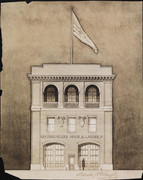

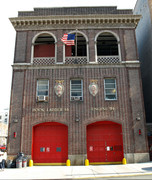
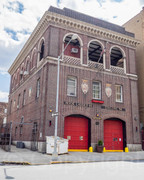

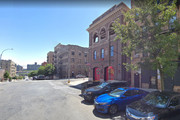

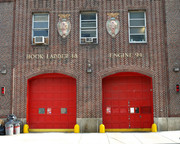
Engine 94:

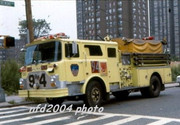

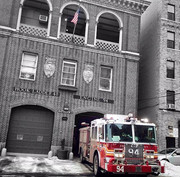
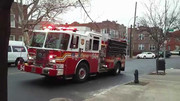

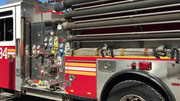

Ladder 48:
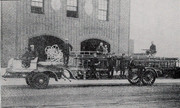
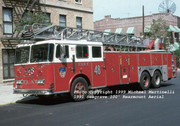
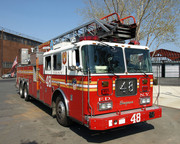

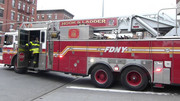

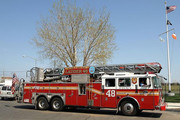

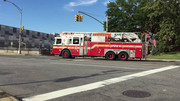
Engine 94/Ladder 48:

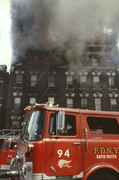
Battalion 3:

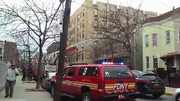
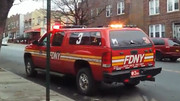
Engine 94/Ladder 48 Centennial:
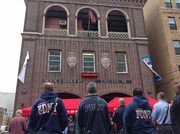

http://www.nydailynews.com/new-york/bronx/bronx-firehouse-honored-article-1.1504249
Engine 94/Ladder 48/Battalion 3:
https://www.youtube.com/watch?v=Tlfoi6gzZ7M
https://www.youtube.com/watch?v=OIKl1fmP36w
https://www.youtube.com/watch?v=U-PBLEyGKWw
Engine 94/Ladder 48 members:


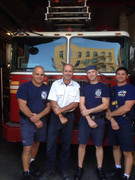
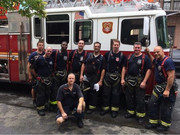

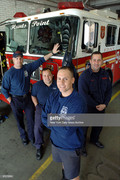
Gas explosion in quarters:

Firehouse attacked:
June 28, 1976 - Engine 94/Ladder 48 quarters - large street fight outside firehouse spilled into quarters - no police were available to assist companies
1977 Hunts Point fire:

Engine 94 organized 1226 Seneca Avenue 1913
Ladder 48 organized 1226 Seneca Avenue 1913
Battalion 3 organized 253 Spring Street at Engine 30 1869
Battalion 3 moved 47 Marion Street at Engine 20 1880
Battalion 3 moved 155 Mercer Street at Ladder 20 1894
Battalion 3 moved 84 Attorney Street at Ladder 18 1903
Battalion 3 moved 155 Mercer Street at Ladder 20 1904
Battalion 3 moved 209 Elizabeth Street at Ladder 9 1904
Battalion 3 moved 155 Mercer Street at Ladder 20 1905
Battalion 3 moved 243 Lafayette Street at Engine 20 1913
Battalion 3 moved 155 Mercer Street at Ladder 20 1922
Battalion 3 moved 1213 Intervale Avenue at Engine 82 1956
Battalion 3 moved 1226 Seneca Avenue at Engine 94 1968
Tactical Control Unit 513 organized 1226 Seneca Avenue at Engine 94 1969
Tactical Control Unit 513 disbanded 1971
(Tactical Control Unit 513 stored at Engine 96)
1226 Seneca Avenue:








Engine 94:








Ladder 48:









Engine 94/Ladder 48:


Battalion 3:



Engine 94/Ladder 48 Centennial:


http://www.nydailynews.com/new-york/bronx/bronx-firehouse-honored-article-1.1504249
Engine 94/Ladder 48/Battalion 3:
https://www.youtube.com/watch?v=Tlfoi6gzZ7M
https://www.youtube.com/watch?v=OIKl1fmP36w
https://www.youtube.com/watch?v=U-PBLEyGKWw
Engine 94/Ladder 48 members:






Gas explosion in quarters:

Firehouse attacked:
June 28, 1976 - Engine 94/Ladder 48 quarters - large street fight outside firehouse spilled into quarters - no police were available to assist companies
1977 Hunts Point fire:

Engine 94/Ladder 48/Battalion 3 (continued)
Medals:
TIMOTHY J. GALLAGHER LT. ENG. 94 DEC. 22, 1965 1966 BROOKMAN
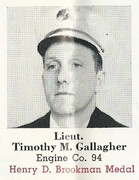
KEVIN G. COLLINS FF. ENG. 94 1975 DELEHANTY
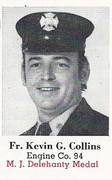
JOSEPH MOLFETTO FF. ENG. 94 SEP. 17, 1976 1977 COLUMBIA
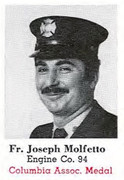
JOHN J. MC NULTY FF. LAD. 48 JAN. 6, 1963 1964 KENNY
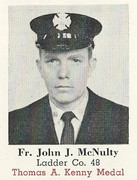
JAMES J. FINEGAN LT. LAD. 48 JAN. 26, 1974 1975 EMERALD

THOMAS G. ANELLO LT. LAD. 48 SEP. 17, 1976 1977 BROOKMAN

RICHARD C. CARLSON FF. LAD. 48 FEB. 7, 1979 1980 PULASKI

SALVATORE MANCUSO LT. LAD. 48 AUG. 8, 1983 1984 KANE

JOHN M. SULLIVAN FF. LAD. 48 JAN. 30, 1990 1991 DOUGHERTY

ALAN W. MAURER FF. LAD. 48 MAY 17, 1993 1994 HONOR LEGION
JOHN F. GRIMES FF. BAT. 3 NOV. 4, 1938 1939 HUGH BONNER
LOUIS J. ARMANINI FF. BAT. 3 MAR. 24, 1952 1953 KENNY
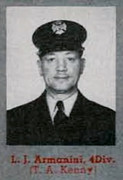
WALTER F. TULLY FF. BAT. 3 DEC. 11, 1967 1968 THOMPSON

PAUL A/ MILLER FF. LAD. 48. 2005 CONRAD
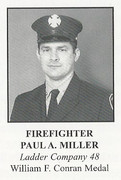
ROBERT P. MEUSER LT. LAD. 48 NOV. 27, 2016 2017 JOHNSON
November 27, 2016, 2016 hours, Box 33-2547, Bronx
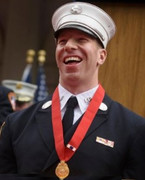

Engine 94/Ladder 48 LODDs:
FIREFIGHTER JOHN CARROLL LADDER 48 April 28, 1935

Fireman John Carroll of Ladder 48 lost his life while working at 1504 Charlotte Street. The fire in the apartment building was small. Fireman Carroll collapsed from exhaustion and was carried out of the building. Members of Rescue 3 treated him with a respirator for over one half hour. Fireman Carroll was taken to Lincoln Hospital where he died at 9:30 that night. Fireman Carroll was a member of the Department for ten years, was married and lived at 2396 Valentine Avenue. His son, Edward J. Carroll became a fireman and was killed in the line of duty at a fire in the Bronx on April 4, 1956 along with five other members of the Department. (From "The Last Alarm")
FIREFIGHTER PETER BIELFELD LADDER 42 September 11, 2001
New York City firefighter killed in the terrorist attack on the World Trade Center on September 11, 2001.
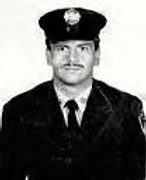
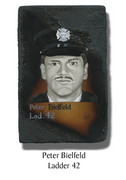
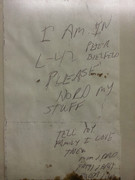

https://www.firehero.org/fallen-firefighter/peter-a-bielfeld/
BATTALION CHIEF GUNTHER E. BEAKE BATTALION 3 August 23, 1949

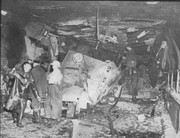
Battalion Chief Gunther E. Beake of the 3rd Battalion died on August 23, 1949 after being overcome by smoke and chemical fumes. He was operating at a second alarm in the Manhattan-bound Holland Tunnel on May 13, 1949. A fire started in a truck carrying chemicals. The truck had 48,536 pounds of highly inflammable and toxic carbon disulfide in fifty-five-gallon drums. The maximum allowed was only 1,000 pounds in one-gallon containers. Chief Beake was the second due chief and had been treated for smoke and fumes during the course of the fire. He returned to work for a short time before becoming ill from the effects of the chemicals. He was fifty-five years old and appointed to Engine 208 on December 29, 1917. (From "The Last Alarm")
FIREFIGHTER EDWARD V. TIETJEN LADDER 48 November 25, 2003

Died as a result of WTC-related illness
BATTALION CHIEF THOMAS R. VAN DORAN BATTALION 3 November 13, 2012

Died as a result of WTC-related illness
RIP. Never forget.
Hunts Point 1928:
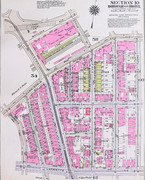
Hunts Point:

http://forgotten-ny.com/2009/03/hunts-point-bronx/



Medals:
TIMOTHY J. GALLAGHER LT. ENG. 94 DEC. 22, 1965 1966 BROOKMAN

KEVIN G. COLLINS FF. ENG. 94 1975 DELEHANTY

JOSEPH MOLFETTO FF. ENG. 94 SEP. 17, 1976 1977 COLUMBIA

JOHN J. MC NULTY FF. LAD. 48 JAN. 6, 1963 1964 KENNY

JAMES J. FINEGAN LT. LAD. 48 JAN. 26, 1974 1975 EMERALD

THOMAS G. ANELLO LT. LAD. 48 SEP. 17, 1976 1977 BROOKMAN

RICHARD C. CARLSON FF. LAD. 48 FEB. 7, 1979 1980 PULASKI

SALVATORE MANCUSO LT. LAD. 48 AUG. 8, 1983 1984 KANE

JOHN M. SULLIVAN FF. LAD. 48 JAN. 30, 1990 1991 DOUGHERTY

ALAN W. MAURER FF. LAD. 48 MAY 17, 1993 1994 HONOR LEGION
JOHN F. GRIMES FF. BAT. 3 NOV. 4, 1938 1939 HUGH BONNER
LOUIS J. ARMANINI FF. BAT. 3 MAR. 24, 1952 1953 KENNY

WALTER F. TULLY FF. BAT. 3 DEC. 11, 1967 1968 THOMPSON

PAUL A/ MILLER FF. LAD. 48. 2005 CONRAD

ROBERT P. MEUSER LT. LAD. 48 NOV. 27, 2016 2017 JOHNSON
November 27, 2016, 2016 hours, Box 33-2547, Bronx


Engine 94/Ladder 48 LODDs:
FIREFIGHTER JOHN CARROLL LADDER 48 April 28, 1935

Fireman John Carroll of Ladder 48 lost his life while working at 1504 Charlotte Street. The fire in the apartment building was small. Fireman Carroll collapsed from exhaustion and was carried out of the building. Members of Rescue 3 treated him with a respirator for over one half hour. Fireman Carroll was taken to Lincoln Hospital where he died at 9:30 that night. Fireman Carroll was a member of the Department for ten years, was married and lived at 2396 Valentine Avenue. His son, Edward J. Carroll became a fireman and was killed in the line of duty at a fire in the Bronx on April 4, 1956 along with five other members of the Department. (From "The Last Alarm")
FIREFIGHTER PETER BIELFELD LADDER 42 September 11, 2001
New York City firefighter killed in the terrorist attack on the World Trade Center on September 11, 2001.




https://www.firehero.org/fallen-firefighter/peter-a-bielfeld/
BATTALION CHIEF GUNTHER E. BEAKE BATTALION 3 August 23, 1949


Battalion Chief Gunther E. Beake of the 3rd Battalion died on August 23, 1949 after being overcome by smoke and chemical fumes. He was operating at a second alarm in the Manhattan-bound Holland Tunnel on May 13, 1949. A fire started in a truck carrying chemicals. The truck had 48,536 pounds of highly inflammable and toxic carbon disulfide in fifty-five-gallon drums. The maximum allowed was only 1,000 pounds in one-gallon containers. Chief Beake was the second due chief and had been treated for smoke and fumes during the course of the fire. He returned to work for a short time before becoming ill from the effects of the chemicals. He was fifty-five years old and appointed to Engine 208 on December 29, 1917. (From "The Last Alarm")
FIREFIGHTER EDWARD V. TIETJEN LADDER 48 November 25, 2003

Died as a result of WTC-related illness
BATTALION CHIEF THOMAS R. VAN DORAN BATTALION 3 November 13, 2012

Died as a result of WTC-related illness
RIP. Never forget.
Hunts Point 1928:

Hunts Point:

http://forgotten-ny.com/2009/03/hunts-point-bronx/



Father/son LODDs: Fireman John Carroll of Ladder 48

Fireman John Carroll of Ladder 48 lost his life while working at 1504 Charlotte Street. The fire in the apartment building was small. Fireman Carroll collapsed from exhaustion and was carried out of the building. Members of Rescue 3 treated him with a respirator for over one half hour. Fireman Carroll was taken to Lincoln Hospital where he died at 9:30 that night. Fireman Carroll was a member of the Department for ten years, was married and lived at 2396 Valentine Avenue. His son, Edward J. Carroll became a fireman and was killed in the line of duty at a fire in the Bronx on April 4, 1956 along with five other members of the Department. (From ?The Last Alarm?)
Firemen Edward J. Carroll of Engine 48

On April 4, 1956, six firemen were killed when the marquee and wall of a former movie theater collapsed into the street. Lieutenant Lieutenant John F. Molloy, Firemen Edward J. Carroll and Fred Hellauer of Engine 48, Firemen William Hoolan, and Arthur Hanson of Ladder 44 and Fireman Charles Infosino of the Headquarters Staff were killed while operating at 4063 Third Avenue. The building was being used by an artificial flower concern. At the time it was the second largest lost of life to hit the Fire Department. The four-alarm fire started in the basement and was fed by highly combustible coloring materials. A dozen men were standing under the marquee directing water into the building with three men on a ladder against the wall. The two iron bars holding the marquee melted and it started falling in slow motion, taking the front wall with it. Shouts of warning were heard and firemen started scrambling in all directions. A few men ran into the wall while most ran away. Those who ran into the wall were slightly injured and those who ran away were buried under tons of debris. Firemen Hoolan and Hanson were both on the ladder and were crushed when the wall fell on them. Lieutenant Molloy, Firemen Carroll, Hellauer and Infosino were located under the marquee. Eight other firemen were injured in the collapse. Fireman Carroll?s father, John Carroll, was a member of the Department and made the Supreme Sacrifice on April 28, 1935. (From ?The Last Alarm?)
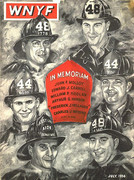
Pictures of Engine 48 members operating at 1956 fire and building collapse:

Picture taken moments before collapse.


http://nyfd.com/3rd_ave_4-4-56.html
RIP. Never forget.

Fireman John Carroll of Ladder 48 lost his life while working at 1504 Charlotte Street. The fire in the apartment building was small. Fireman Carroll collapsed from exhaustion and was carried out of the building. Members of Rescue 3 treated him with a respirator for over one half hour. Fireman Carroll was taken to Lincoln Hospital where he died at 9:30 that night. Fireman Carroll was a member of the Department for ten years, was married and lived at 2396 Valentine Avenue. His son, Edward J. Carroll became a fireman and was killed in the line of duty at a fire in the Bronx on April 4, 1956 along with five other members of the Department. (From ?The Last Alarm?)
Firemen Edward J. Carroll of Engine 48

On April 4, 1956, six firemen were killed when the marquee and wall of a former movie theater collapsed into the street. Lieutenant Lieutenant John F. Molloy, Firemen Edward J. Carroll and Fred Hellauer of Engine 48, Firemen William Hoolan, and Arthur Hanson of Ladder 44 and Fireman Charles Infosino of the Headquarters Staff were killed while operating at 4063 Third Avenue. The building was being used by an artificial flower concern. At the time it was the second largest lost of life to hit the Fire Department. The four-alarm fire started in the basement and was fed by highly combustible coloring materials. A dozen men were standing under the marquee directing water into the building with three men on a ladder against the wall. The two iron bars holding the marquee melted and it started falling in slow motion, taking the front wall with it. Shouts of warning were heard and firemen started scrambling in all directions. A few men ran into the wall while most ran away. Those who ran into the wall were slightly injured and those who ran away were buried under tons of debris. Firemen Hoolan and Hanson were both on the ladder and were crushed when the wall fell on them. Lieutenant Molloy, Firemen Carroll, Hellauer and Infosino were located under the marquee. Eight other firemen were injured in the collapse. Fireman Carroll?s father, John Carroll, was a member of the Department and made the Supreme Sacrifice on April 28, 1935. (From ?The Last Alarm?)

Pictures of Engine 48 members operating at 1956 fire and building collapse:

Picture taken moments before collapse.


http://nyfd.com/3rd_ave_4-4-56.html
RIP. Never forget.
LODD - BATTALION CHIEF GUNTHER E. BEAKE BATTALION 3 August 23, 1949

Battalion Chief Gunther E. Beake of the 3rd Battalion died on August 23, 1949 after being overcome by smoke and chemical fumes. He was operating at a second alarm in the Manhattan-bound Holland Tunnel on May 13, 1949.
Holland Tunnel Fire - May 13, 1949 - Manhattan Box 2-2-308:
At 8:30 a.m. a truck carrying eighty 55-gallon drums of carbon disulfide entered the southern tube at the New Jersey portal. The tunnel had two tubes, the southern one for eastbound traffic and the western one for westbound traffic. At the time, it was forbidden to carry carbon disulfide through either tubes. After the truck had traveled east for approximately 2900 feet (880 m) in heavy traffic, one of the drums broke free of its restraints, fell onto the roadway and cracked open. Vapor released from the drum was ignited when it came into contact with a hot surface, probably a brake or exhaust.[3]:6 Carbon disulfide vapor ignites when raised to a temperature of 194 ?F / 90 ?C, so it was considered highly flammable; moreover, it could be deadly if inhaled in large amounts.
The truck came to rest in the left lane of the tunnel on a 0.25% downgrade and began to burn. Four trucks stopped on the right lane and also caught fire or were abandoned, and five more trucks caught fire slightly to the back of the carbon disulfide-carrying truck. The tunnel west of the fire became gridlocked with traffic; ultimately, 125 vehicles got stuck in the tube before it was closed.
Emergency response
Port Authority of New York and New Jersey patrolmen in the tube east and west of the truck radioed in to advise of the blockage (8:48 a.m.) then to advise of the fire (8:56 a.m.). They assisted drivers to escape to the north tube through cross-passages. Tunnel staff entered the New Jersey portal to evacuate the occupants there and started to reverse vehicles out, while a works brigade crew drove the wrong way along the south tube and began fighting the fire at the site of the truck where it started. At the time of the fire, the Holland Tunnel was operated by the Port Authority, which had control of various other transportation facilities in the area as well. Consequently, they had a works fire brigade at the eastern end of the south tube. They initiated firefighting operations at the site of the fire with a 1.5-inch (3.8 cm) hose about five minutes after it started. However, they soon realized that they needed extra assistance due to the confined nature of the fire.
The Jersey City Fire Department (JCFD) was alerted at 9:05 a.m., and the New York City Fire Department (FDNY) was alerted at 9:12 a.m. The FDNY crew set up a command post in the north tunnel at a cross passage near to the fire. They relieved the works brigade and sent a "make pumps 9" alarm at 9:30 a.m. When the JCFD crews arrived at the tunnel portal, they also sent requests for more firefighters and for oxygen breathing equipment. The crews also worked on placing illumination inside the tunnel.[4] The FDNY and JCFD called up 29 firefighting trucks of varying types and borrowed four more trucks with breathing apparatus from Consolidated Edison. In total there were about 63 emergency response vehicles (including police, medical units, Port Authority vehicles and brigade supervisory vehicles).
Hot smoke caused a second fire to start, in a group of trucks apparently carrying paint and turpentine approximately 350 feet (110 m) west of the original fire. After this, the tunnel ventilation system was turned to full extract and full supply in order to extract smoke and reduce the likelihood of other spontaneous ignitions. New Jersey firemen succeeded in extinguishing the second fire, and cleared a path for brigade vehicles to the first fire site where they linked up with the New York firemen.
The tunnel fire main, a 6-inch (150 mm) water pipe cast directly into the secondary concrete lining, continued to function throughout the fire.[2]:107[3]:7 The FDNY supplemented this with water from a 2.5-inch (6.4 cm) hose. The fire was the first time in the FDNY's history that it had been required to use four rescue squad vehicles at the same fire.
"Holland Tunnel Fire" WNYF July 1949
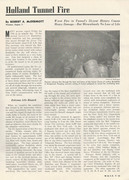

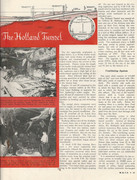

https://www.youtube.com/watch?v=dij70gsSTKM

Battalion Chief Gunther E. Beake of the 3rd Battalion died on August 23, 1949 after being overcome by smoke and chemical fumes. He was operating at a second alarm in the Manhattan-bound Holland Tunnel on May 13, 1949.
Holland Tunnel Fire - May 13, 1949 - Manhattan Box 2-2-308:
At 8:30 a.m. a truck carrying eighty 55-gallon drums of carbon disulfide entered the southern tube at the New Jersey portal. The tunnel had two tubes, the southern one for eastbound traffic and the western one for westbound traffic. At the time, it was forbidden to carry carbon disulfide through either tubes. After the truck had traveled east for approximately 2900 feet (880 m) in heavy traffic, one of the drums broke free of its restraints, fell onto the roadway and cracked open. Vapor released from the drum was ignited when it came into contact with a hot surface, probably a brake or exhaust.[3]:6 Carbon disulfide vapor ignites when raised to a temperature of 194 ?F / 90 ?C, so it was considered highly flammable; moreover, it could be deadly if inhaled in large amounts.
The truck came to rest in the left lane of the tunnel on a 0.25% downgrade and began to burn. Four trucks stopped on the right lane and also caught fire or were abandoned, and five more trucks caught fire slightly to the back of the carbon disulfide-carrying truck. The tunnel west of the fire became gridlocked with traffic; ultimately, 125 vehicles got stuck in the tube before it was closed.
Emergency response
Port Authority of New York and New Jersey patrolmen in the tube east and west of the truck radioed in to advise of the blockage (8:48 a.m.) then to advise of the fire (8:56 a.m.). They assisted drivers to escape to the north tube through cross-passages. Tunnel staff entered the New Jersey portal to evacuate the occupants there and started to reverse vehicles out, while a works brigade crew drove the wrong way along the south tube and began fighting the fire at the site of the truck where it started. At the time of the fire, the Holland Tunnel was operated by the Port Authority, which had control of various other transportation facilities in the area as well. Consequently, they had a works fire brigade at the eastern end of the south tube. They initiated firefighting operations at the site of the fire with a 1.5-inch (3.8 cm) hose about five minutes after it started. However, they soon realized that they needed extra assistance due to the confined nature of the fire.
The Jersey City Fire Department (JCFD) was alerted at 9:05 a.m., and the New York City Fire Department (FDNY) was alerted at 9:12 a.m. The FDNY crew set up a command post in the north tunnel at a cross passage near to the fire. They relieved the works brigade and sent a "make pumps 9" alarm at 9:30 a.m. When the JCFD crews arrived at the tunnel portal, they also sent requests for more firefighters and for oxygen breathing equipment. The crews also worked on placing illumination inside the tunnel.[4] The FDNY and JCFD called up 29 firefighting trucks of varying types and borrowed four more trucks with breathing apparatus from Consolidated Edison. In total there were about 63 emergency response vehicles (including police, medical units, Port Authority vehicles and brigade supervisory vehicles).
Hot smoke caused a second fire to start, in a group of trucks apparently carrying paint and turpentine approximately 350 feet (110 m) west of the original fire. After this, the tunnel ventilation system was turned to full extract and full supply in order to extract smoke and reduce the likelihood of other spontaneous ignitions. New Jersey firemen succeeded in extinguishing the second fire, and cleared a path for brigade vehicles to the first fire site where they linked up with the New York firemen.
The tunnel fire main, a 6-inch (150 mm) water pipe cast directly into the secondary concrete lining, continued to function throughout the fire.[2]:107[3]:7 The FDNY supplemented this with water from a 2.5-inch (6.4 cm) hose. The fire was the first time in the FDNY's history that it had been required to use four rescue squad vehicles at the same fire.
"Holland Tunnel Fire" WNYF July 1949




https://www.youtube.com/watch?v=dij70gsSTKM
Engine 263/Ladder 117 firehouse 40-08 Astoria Boulevard Astoria, Queens Division 14, Battalion 49 "The Road Runners"
Engine 5 LICFD organized 40-08 Astoria Boulevard former volunteer firehouse w/Ladder 4 LICFD 1894
Engine 5 LICFD became Engine 6 FDNY 1898
Engine 6 became Engine 163 1899
Engine 163 new firehouse 42-06 Astoria Boulevard w/Ladder 67 1909
Engine 163 became Engine 263 1913
Engine 263 disbanded 1975
Engine 263 reorganized 42-08 Astoria Boulevard 1975
Ladder 4 LICFD organized 40-08 Astoria Boulevard former volunteer firehouse w/Engine 5 LICFD 1894
Ladder 4 LICFD became Ladder 4 FDNY 1898
Ladder 4 became Ladder 67 1899
Ladder 67 new firehouse 42-08 Astoria Boulevard w/Engine 163 1909
Ladder 67 became Ladder 117 1913
Battalion 46 organized 40-08 Astoria Boulevard at Engine 163 1906
Battalion 46 new firehouse 42-06 Astoria Boulevard 1909
Battalion 46 disbanded 1909
Note: Battalion 46 reorganized 86-18 Broadway at Engine 287 in 1913
Long Island City was formerly a city, created in 1870, from the merger of the Long Island village of Astoria and the hamlets of Ravenswood, Hunters Point, Blissville, Sunnyside, Dutch Kills, Steinway, Bowery Bay and Middleton in Newtown Township. It was a separate city until it became part of New York City in 1898.
Long Island City 1873 map:
http://upload.wikimedia.org/wikipedia/commons/a/a0/1873_Beers_Map_of_Astoria_and_Long_Island_City,_Queens,_New_York_-_Geographicus_-_LongIslandCity-beers-1873.jpg
- Note: Blackwells Island (became Welfare Island, then Roosevelt Island); separate Ward's Island and Randall's Island and ferries to Manhattan.
Long Island City volunteer fire companies 1890:
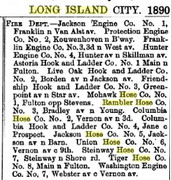
Long Island City Fire Department was a paid fire department which protected Long Island City in the 1890s before it became part of New York City in 1898. LICFD companies entered FDNY in 1989 and were renumbered in 1898 and later in 1913.
Long Island City Fire Department (paid department) 1891-1898:
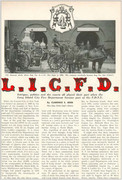
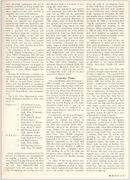
Long Island City Fire Department companies 1897:

LICFD conversion to FDNY:
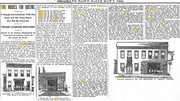
40-08 Astoria Boulevard firehouse:
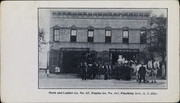
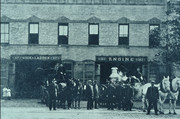
42-08 Astoria Boulevard firehouse:
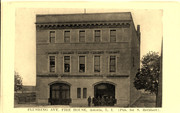

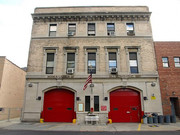
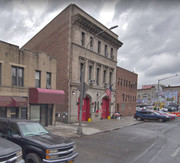
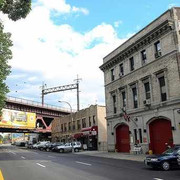
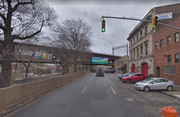
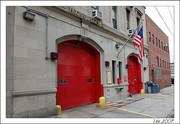

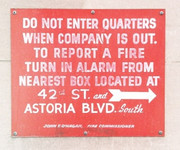

Engine 263:

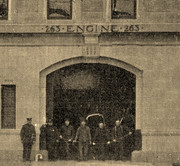
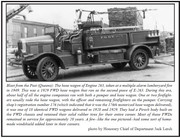
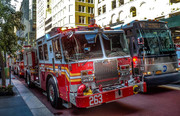
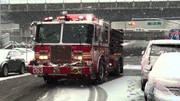

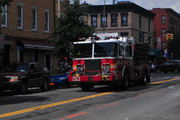
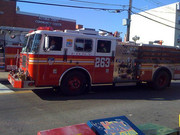

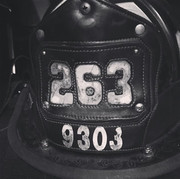
Ladder 117:
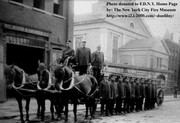

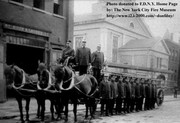



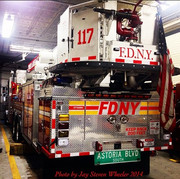
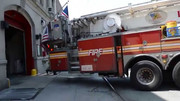
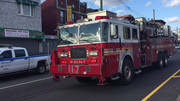

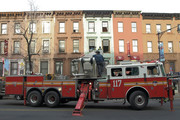



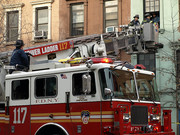
Engine 5 LICFD organized 40-08 Astoria Boulevard former volunteer firehouse w/Ladder 4 LICFD 1894
Engine 5 LICFD became Engine 6 FDNY 1898
Engine 6 became Engine 163 1899
Engine 163 new firehouse 42-06 Astoria Boulevard w/Ladder 67 1909
Engine 163 became Engine 263 1913
Engine 263 disbanded 1975
Engine 263 reorganized 42-08 Astoria Boulevard 1975
Ladder 4 LICFD organized 40-08 Astoria Boulevard former volunteer firehouse w/Engine 5 LICFD 1894
Ladder 4 LICFD became Ladder 4 FDNY 1898
Ladder 4 became Ladder 67 1899
Ladder 67 new firehouse 42-08 Astoria Boulevard w/Engine 163 1909
Ladder 67 became Ladder 117 1913
Battalion 46 organized 40-08 Astoria Boulevard at Engine 163 1906
Battalion 46 new firehouse 42-06 Astoria Boulevard 1909
Battalion 46 disbanded 1909
Note: Battalion 46 reorganized 86-18 Broadway at Engine 287 in 1913
Long Island City was formerly a city, created in 1870, from the merger of the Long Island village of Astoria and the hamlets of Ravenswood, Hunters Point, Blissville, Sunnyside, Dutch Kills, Steinway, Bowery Bay and Middleton in Newtown Township. It was a separate city until it became part of New York City in 1898.
Long Island City 1873 map:
http://upload.wikimedia.org/wikipedia/commons/a/a0/1873_Beers_Map_of_Astoria_and_Long_Island_City,_Queens,_New_York_-_Geographicus_-_LongIslandCity-beers-1873.jpg
- Note: Blackwells Island (became Welfare Island, then Roosevelt Island); separate Ward's Island and Randall's Island and ferries to Manhattan.
Long Island City volunteer fire companies 1890:

Long Island City Fire Department was a paid fire department which protected Long Island City in the 1890s before it became part of New York City in 1898. LICFD companies entered FDNY in 1989 and were renumbered in 1898 and later in 1913.
Long Island City Fire Department (paid department) 1891-1898:


Long Island City Fire Department companies 1897:

LICFD conversion to FDNY:

40-08 Astoria Boulevard firehouse:


42-08 Astoria Boulevard firehouse:










Engine 263:










Ladder 117:















Engine 263/Ladder 117 (continued)
Engine 263/Ladder 117 - 1992:
https://www.youtube.com/watch?v=TmgCUY4GuIA
https://www.youtube.com/watch?v=jO5JiEy4SJI
Engine 263/Ladder 117:
https://www.youtube.com/watch?v=Ba0W3Gmfnso
https://www.youtube.com/watch?v=E6-mRZ3C85o
https://www.youtube.com/watch?v=FTEHH_krW38
Ladder 117 1923 - rescue from gas-filled pipe:

Ladder 117 1932 fire - rescue family of 4:

Engine 263/Ladder 117 medals:
CHARLES G. ORTLAM FF. ENG. 263 CRASH 31 MAY 29, 1947 1949 DEPARTMENT
May 29, 1947 LaGuardia Airport DC-4 crash - Fireman Charles Ortlam crawled through the small utility door opening, into the plane's bathroom, and gained access to the center aisleway. Passengers were still strapped in smoldering seats, some were heaped on the floor. He immediately removed 2 passengers through the utility door. This was accomplished even though the bathroom sink limited clearance to the hatch door to 10 in. Ortlam was also operating without a mask.
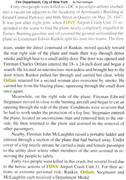
KEVIN G. COLLINS FF. ENG. 263 MAY 6, 1975 1976 DELEHANTY
EBERHARD H. VON UCHTRUP FF. LAD. 117 JAN. 5, 1955 1956 LA GUARDIA
PETER J. KONOPKA FF. LAD. 117 JAN. 14,2000 2001 DELEHANTY

Engine 263 LODD:
FIREFIGHTER JAMES COSTELLO ENGINE 263 October 13, 1945

RIP. Never forget.
Astoria:

https://en.wikipedia.org/wiki/Astoria,_Queens
https://oana-ny.org/history/




Engine 263/Ladder 117 - 1992:
https://www.youtube.com/watch?v=TmgCUY4GuIA
https://www.youtube.com/watch?v=jO5JiEy4SJI
Engine 263/Ladder 117:
https://www.youtube.com/watch?v=Ba0W3Gmfnso
https://www.youtube.com/watch?v=E6-mRZ3C85o
https://www.youtube.com/watch?v=FTEHH_krW38
Ladder 117 1923 - rescue from gas-filled pipe:

Ladder 117 1932 fire - rescue family of 4:

Engine 263/Ladder 117 medals:
CHARLES G. ORTLAM FF. ENG. 263 CRASH 31 MAY 29, 1947 1949 DEPARTMENT
May 29, 1947 LaGuardia Airport DC-4 crash - Fireman Charles Ortlam crawled through the small utility door opening, into the plane's bathroom, and gained access to the center aisleway. Passengers were still strapped in smoldering seats, some were heaped on the floor. He immediately removed 2 passengers through the utility door. This was accomplished even though the bathroom sink limited clearance to the hatch door to 10 in. Ortlam was also operating without a mask.

KEVIN G. COLLINS FF. ENG. 263 MAY 6, 1975 1976 DELEHANTY
EBERHARD H. VON UCHTRUP FF. LAD. 117 JAN. 5, 1955 1956 LA GUARDIA
PETER J. KONOPKA FF. LAD. 117 JAN. 14,2000 2001 DELEHANTY

Engine 263 LODD:
FIREFIGHTER JAMES COSTELLO ENGINE 263 October 13, 1945

RIP. Never forget.
Astoria:

https://en.wikipedia.org/wiki/Astoria,_Queens
https://oana-ny.org/history/








